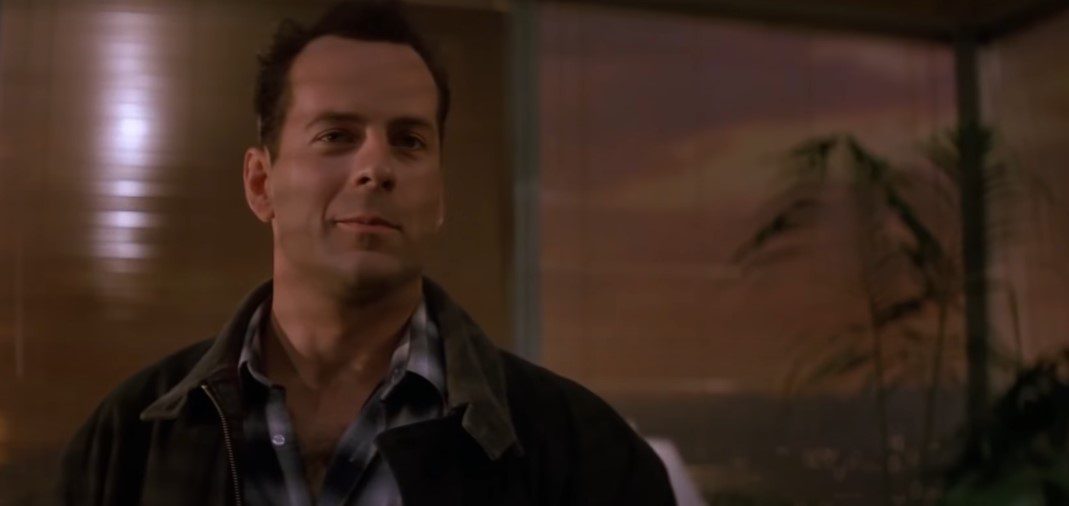One of the most well-known performers in Hollywood and one of the greatest action stars of all time is Bruce Willis. As the year ends, we bring to you a farewell gift, a list of 41 Best Bruce Willis Movies. He has, of course, been in a variety of films that successfully showcased his skill as an action hero.
And while he may be most recognized as the star of the Die Hard film series, it’s vital to realize that he has a tonne of other equally excellent films. American actor Bruce Willis is most recognized for his roles in big-budget action movies, especially the Die Hard series.
Willis’ father was stationed at an American military facility in West Germany when he was born; in 1957, the family relocated to New Jersey. He worked several odd jobs following his high school graduation before enrolling at Montclair State College to study theatre.
His acting career started in New York City with Off-Broadway roles and performances in television advertisements after he dropped out of college. Before being cast as a wisecracking detective opposite Cybill Shepherd in the television sitcom Moonlighting, Willis had a handful of small film parts in the early 1980s.
The show launched Willis’s cinematic career, which also helped make him well-known. Willis played the jaded but amiable New York City police officer John McClane who gets caught up in a terrorist attack on a Los Angeles office building in the action film Die Hard.
The movie was a huge financial hit and helped establish Willis as a top action star. The sequels Die Hard 2, Die Hard with a Vengeance, Live Free or Die Hard, and A Good Day to Die Hard were also born from this film.
1. Pulp Fiction (1994)
You can dump your trunk on the big fellas if you plug gold with your first shot. Quentin Tarantino would be the plugger, and Miramax, the big boys in this rock ‘n’ roll scenario. The product in question is Pulp Fiction, a three-part narrative that Tarantino cobbled together before Reservoir Dogs gave him his big break.
The audience will realize that Dogs originated from one of this thing’s components if they still have some ammunition in the chamber. Don’t expect John Q. Public to pay money for this spray of ammunition, torture, old tunes, and new sounds. Neo-noir enthusiasts, Tarantino lovers, and festival goers will pay money for this sleaze-streets spin.
In this 1990s reimagining of a gritty 1940s pulp fiction, the kind Dash Hammett and the gang used to churn out, Tarantino’s lined up a superb cast to play his assorted snotwads, sleazoids, small-timers, druggies, and bullheads.
In addition to Harvey Keitel as Wolf the Fixer and Tim Roth and Amanda Plummer as Pumpkin and Honey Bunny, who perform Tarantino’s opening number, the coffee-shop philosophy routine, there are John Travolta and Samuel L. Jackson as dope world enforcers, Uma Thurman as a new age moll, Bruce Willis as a prizefighter, Christopher Walken as a ‘Nammie platoon captain, and Uma Thurman as a new age moll.
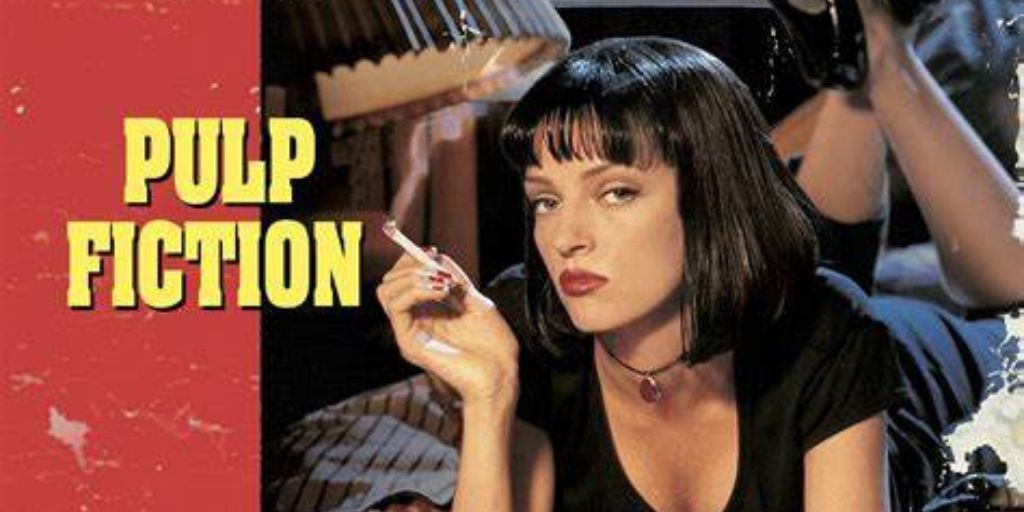
2. Die Hard (1988)
The most extravagant movie right now has to be “Die Hard,” in which Bruce Willis’ $5 million salary is put on the line. It heaps all of the action genre’s well-known components into the thin plot of a New York cop saving hostages from a Los Angeles office building on Christmas Eve.
The movie is mainly a spectacular effects carnival with machine gun fire, screaming helicopters, and an exploding tank. It is partially an interracial buddy movie and mostly the melancholy story of a broken marriage.
Along with a villain straight out of the Royal Shakespeare Company, a thug from the Bolshoi Ballet, and a hero who embodies the smirks and one-liners that helped “Moonlighting” become a television hit, it also features a villain.
The odd thing is that it succeeds: “Die Hard” is incredibly foolish but enjoyable as an escape. When John McClane (Mr. Willis) arrives in Los Angeles to see his estranged wife (Bonnie Bedelia) and attends her business Christmas party, the movie drags for a half-hour.
A terrorist squad arrives shortly after with plans to take $6 million in bonds. Before entering the vault, the terrorists must decipher a challenging computer code, giving McClane plenty of opportunity to save the day.
Since Mr. Willis’ greatest strength is in banter, filmmaker John McTiernan cleverly combines action sequences with humorous dialogue. McClane sprints through elevator shafts. He takes the terrorist’s machine pistol and band radio after killing him.
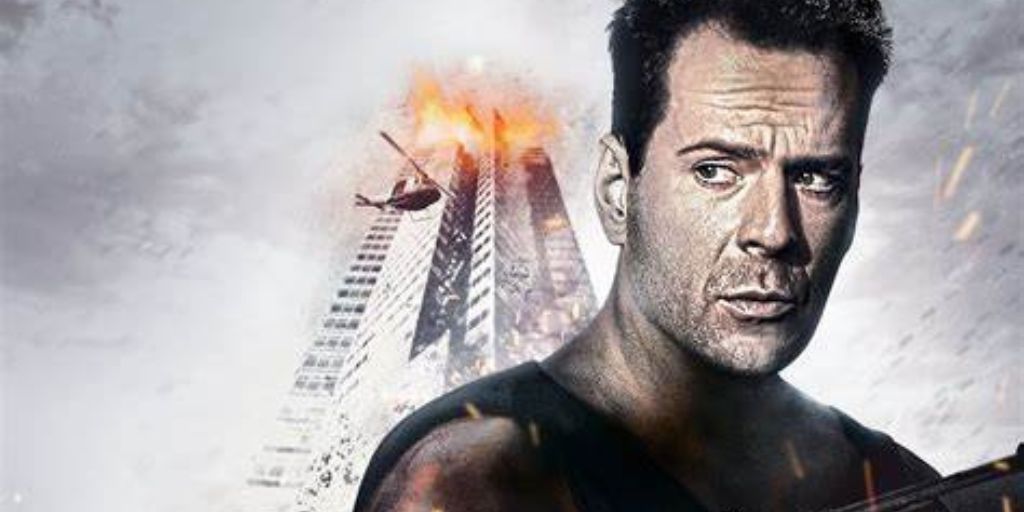
3. The Sixth Sense (1999)
“The Sixth Sense” isn’t a thriller in the traditional sense; rather, it’s a classic ghost story from a time when common people could see into other dimensions. Children are thought to be better than adults at perceiving ghosts since doubt and denial are not yet established as barriers.
A young boy in the movie sadly informs his psychotherapist, “I see the dead. They want me to take care of their requirements.” He appears to be right. Malcolm Crowe, a psychotherapist, played by Bruce Willis, gets shot one night in his house by an intruder who was formerly one of his patients but now feels he was treated unfairly.
Then the man pulls the trigger on himself. According to the subtitles, “the next fall,” we see Crowe physically healed but possibly not spiritually as he takes on a new case involving a young man named Cole Sear, who shares some of the same issues as the patient who shot at him. Maybe he can do it correctly this time.
We see things in the movie that grownups do not. All of the doors and drawers are open when Cole’s mother briefly exits the kitchen and enters again. He says to his teacher in class, “They used to hang people here.” Cole kindly informs the teacher that “when you were a boy, they called you Stuttering Stanley” in response to the teacher’s question about how he could know stuff like that.
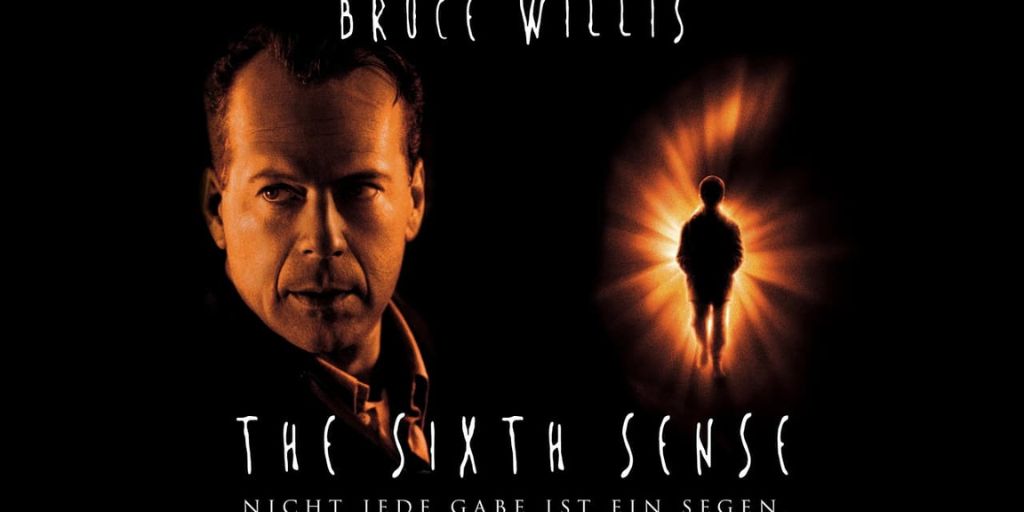
4. Sin City (2005)
His nightmares would resemble “Sin City” if “film noir” weren’t a genre but rather a rough man on nasty streets with a lost gorgeous in his heart and a gat in his gut. The next film by Robert Rodriguez and Frank Miller has a convention-like feel that Quentin Tarantino might experience at a movie museum.
In a city where everyone smokes, the streets are usually damp, and the vehicles are ragtops, A-list action stars mingle with snaky villains and seductive wenches. Except for the Yellow Bastard, red blood, green eyes, and blonde hair, the world is black and white.
This isn’t a comic book adaptation; rather, it’s a comic book that has been given a shot of steroids and brought to life. It has people that appear in stories, but summarising the plot and character development would be equivalent to replacing the weather with a weather map.
The focus of the film is aesthetics rather than a story. It internalizes the brutal universe of the “Sin City” comic novels by Frank Miller and processes it using computer effects, gory makeup, obscene clothing, and speech that snips at the noir vocabulary.
Actors like Bruce Willis, Mickey Rourke, Jessica Alba, Rosario Dawson, Benicio Del Toro, Clive Owen, and others are rotated into hypertension to extract the archetypes that each one of them embodies.
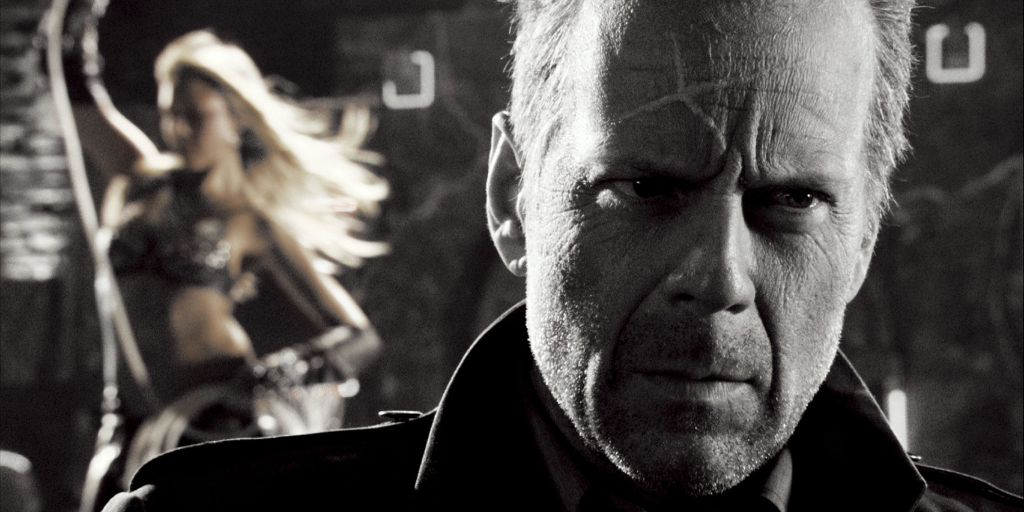
5. 12 Monkeys (1995)
David Peoples, who also co-wrote “Blade Runner,” contributed to Terry Gilliam’s ambitious “12 Monkeys,” which has the same perspective of the near future as a grunge pit as Gilliam’s own “Brazil.” Everything on this planet is underground, rusted, and leaky. The movie’s basic plot, which is set in 1990 and 1996 and involves a time traveler attempting to save the world from a devastating epidemic, uses its future world as a base and launch pad.
Cole (Bruce Willis), the wanderer, is shown in the early scenes living underground with a small group of other human survivors in a shelter constructed out of discarded components and a lot of wire mesh. After a disease in 1996 that killed 5 billion people, animals have taken back the planet’s surface.
The rulers of this dominion free Cole from his cage and send him on a surface expedition, hoping that they might discover enough about the plague virus to eradicate it. Later, he is chosen for a more important task: traveling back in time to obtain data on the virus before it evolved.
Cole arrives in 1990 bloodied, battered, and perspiring mucous and sweat from every pore. He is put in jail and given Dr. Kathryn Railly as his psychiatrist since she thinks he is insane when he claims to be a visitor from the future.

6. Moonrise Kingdom (2012)
As distinctive and well-known as Japanese noh theatre, Wes Anderson’s filmmaking style is now, and he has been around long enough for audiences to know whether they like or dislike it. For me, it is the latter, even though I lost interest in Anderson with the 2007 release of The Darjeeling Limited, a movie in which his usual mannerisms disastrously lacked the traits of gentleness and charm, with the outcome being self-indulgent.
But two years later, his Americanized, animated adaptation of Roald Dahl’s Fantastic Mr. Fox was a welcome step back in the right direction. And now, Moonrise Kingdom is another vivacious confection of oddities, attractively eccentric, witty, and strangely dressed in the manner of his The Royal Tenenbaums, and like Rushmore, specifically about young people.
This movie is a delightful, beautifully crafted, albeit somewhat shallow depiction of young love in a more innocent America. It is emotional and thoughtful down to the smallest, quirkiest detail in the traditional Wes Anderson fashion. There are typical rectilinear compositions and views with text and drawings that unexpectedly cover the screen like exhibits in a courtroom.
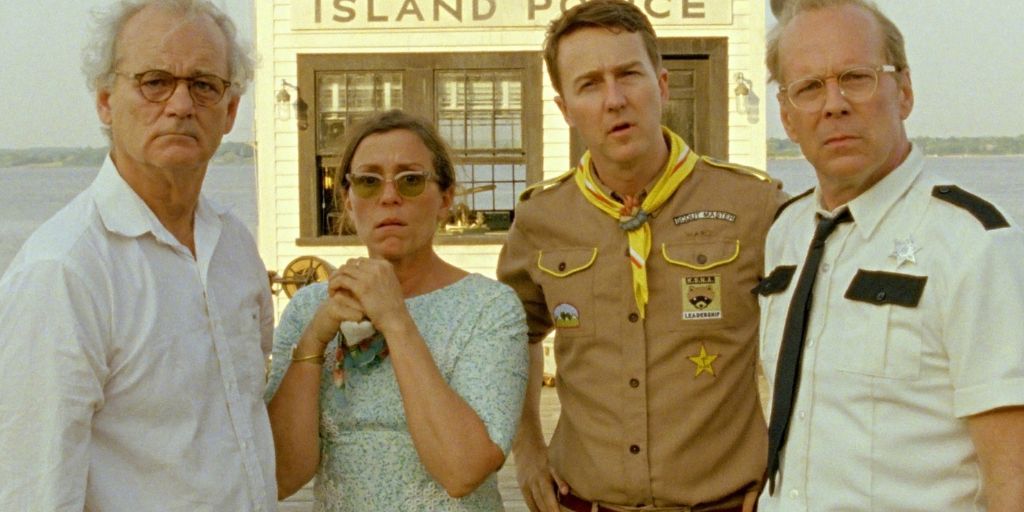
7. Lucky Number Slevin (2006)
“Lucky Number Slevin” is far too intelligent. The worst form of deception is one that warns us that it is one, leaving us without the comfort of being guided in the right direction. In the opening scenes, the reality is abruptly pulled out from under us, and soon the floor is torn apart.
I’m angry as I crouch in the dark. All I have left are the performances and the production design because the plot is unimportant, and the dialogue is too polite to be taken seriously. The performances are juicy. Watching professionals at work as a group of A-list actors perform their specialty numbers is enjoyable.
The film opens with Bruce Willis’ character (a man in a wheelchair) delivering an odd tale to a stranger in an airport waiting area. The situation is quickly characterized as shady at best and fantasy at worst by the empty lounge.
The Kansas City Shuffle is mentioned in the story, which centers on a manipulated horse race. Although the Kansas City Shuffle’s exact definition is unknown, Willis points out that there cannot be one without a body. This is not the kind of thing you want to hear in a deserted airport lounge from a stranger.

8. The Fifth Element (1997)
One of the greatest silly films, “The Fifth Element,” which premiered at the Cannes Film Festival on Thursday, is so ridiculous that I wasn’t shocked to learn that a teenage guy wrote the screenplay.
That little lad went on to become the director Luc Besson, who has made both excellent small-scale films and weird large-scale ones. Here, he has invested $90 million to produce sights that are so amazing they must be seen. That’s not to argue that this movie is very good.
It’s more of a mishmash with grandeur in it. It delivers such magnificent visions that you put your objections on hold and are just delighted to witness them, like “Metropolis” (1926) or “Blade Runner.” Besson might have had a genuine talent if he had been able to connect those sights with a more structured plot and merciless editing.
The picture starts in “Egypt, 1914,” the birthplace of innumerable slasher and supernatural movies, as well as civilizations, Scientists congregate inside an old tomb at the scene of an incident that happened (we discover) centuries previously.
Four important stones representing the four elements had been held here until a spacecraft with an alien entity inside it that sounded like a hairy aerodynamic pineapple arrived to take them away. “Priest, thank you for your service. But the battle is on its way. The stones are no longer secure on Earth. Deeply foreboding opening signs nearly always lead to inaction sequences.
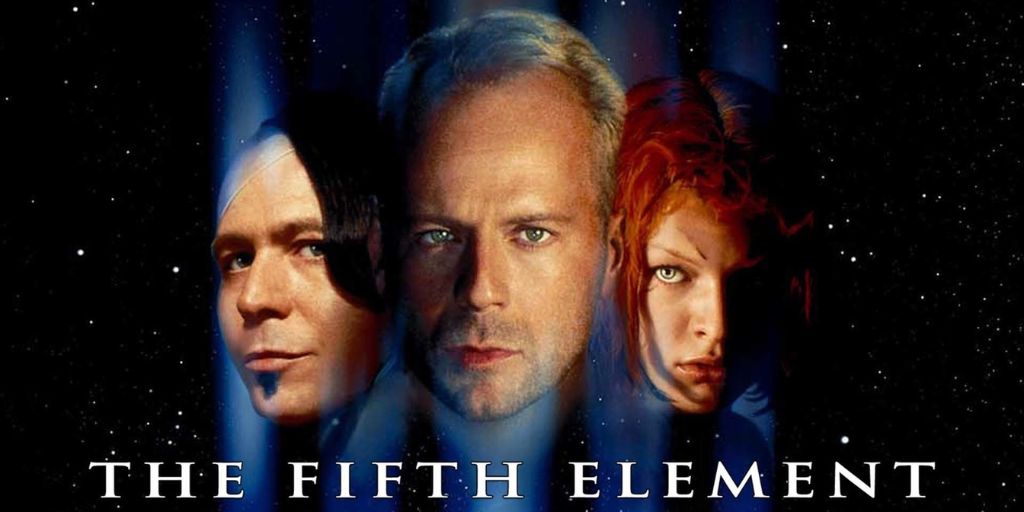
9. Die Hard with a Vengeance (1995)
In the third installment of the “Die Hard” series, Bruce Willis plays detective John McClane, who is now suspended from the New York Police Department. The chief shoves McClane’s badge across the desk in a scene when McClane says, “Does this imply I’m back on active duty?” People who value the wonderful old traditions, such as the idea that all hero cops are rogues who are either under suspension or heading for it, could be heard laughing with knowledge in the audience.
Following the horrifyingly realistic bombing of a Manhattan department store, McClane receives a call from a crazy bomber named Simon telling him to wait on a street corner in Harlem while carrying a sandwich board with a message that one would especially hope not to be wearing there.
Zeus, the proprietor of a nearby store, saves McClane’s life and later joins Simon in his bizarre game of cat and mouse. The structure of the film lends itself, particularly to a succession of stunts and bloody action scenes.
Simon, who seems to be everywhere and can see everything, sends McClane and Zeus on a series of life-threatening missions as they hurtle across Manhattan. Bombs appear everywhere in the city, first on a metro train and then at a local school.
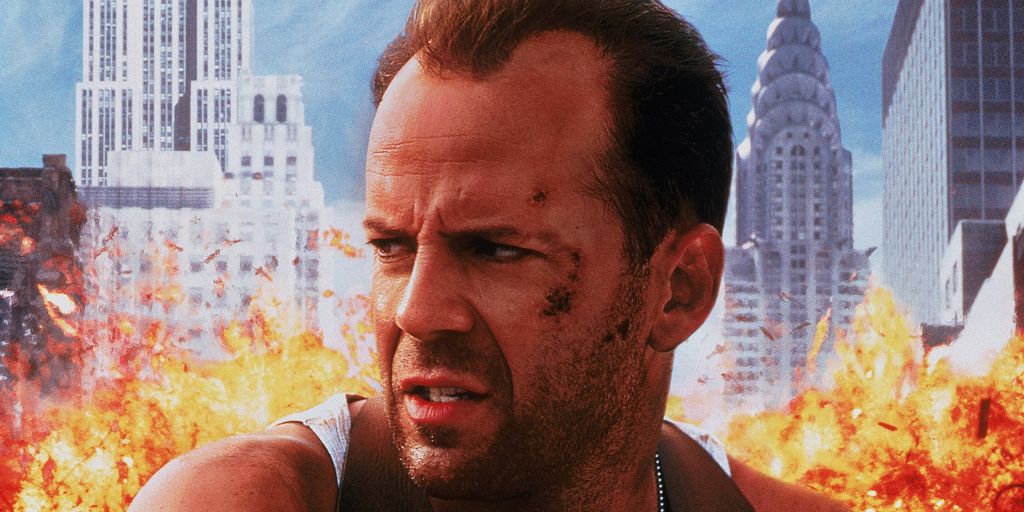
10. Grindhouse (2007)
“Grindhouse,” a conscious attempt by the two directors to recreate the feeling of a double feature in a seedy B-house, is comprised of the two distinct feature-length stories combined. The prints are marred by imperfections, frames or even entire reels are allegedly missing, and the characters are reduced to the superficial simplicity of action figures that rely solely on special effects.
A set of four trailers for more B-minus movies stands between them. Although I’ve been watching movies since before each of these directors was born, I’ve never seen a double bill and supporting program quite like the one they have produced.
This summons of a grindhouse may have been somewhere, at some point. Not even in the McVickers, Roosevelt, Shangri-La, Monroe, Loop, or Parkway theatres in Chicago, which are now largely forgotten. Certainly not when looking for potential “Dog of the Week” opponents for Spot the Wonder Dog to bark at.
And it must be acknowledged that Rodriguez and Tarantino lack willpower when it comes to making lousy movies. You can see them trying to cram art into the cracks of dreck, to paraphrase Manny Farber.
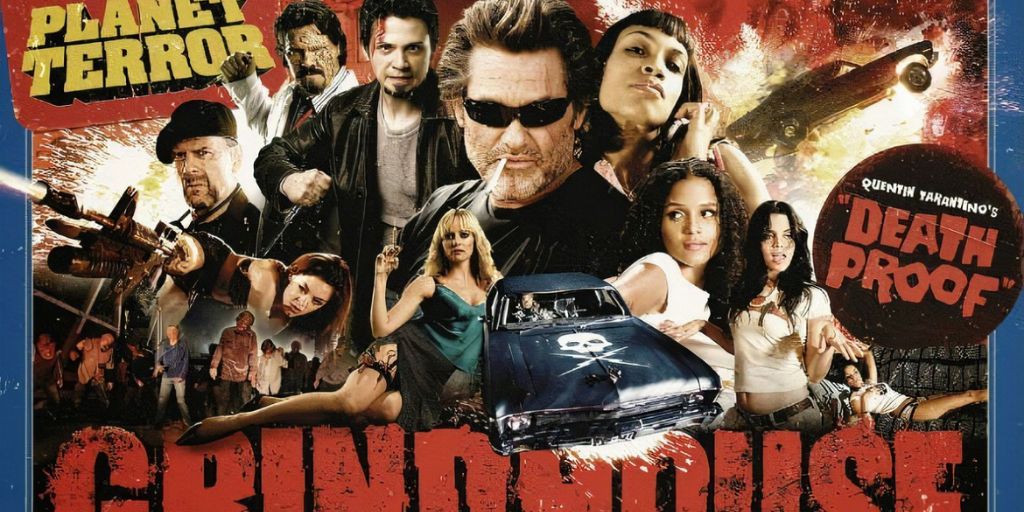
11. Looper (2012)
A riveting time-travel sci-fi thriller influenced by James Cameron’s The Terminator and Christopher Nolan’s Memento, Looper by Rian Johnson is both exhilarating and perplexing at the same time. It has a distinct creepiness and a strong feeling of urgency.
Surprisingly, the movie is set in 2044 and also another 30 years into the future. In 2074, time travel was discovered and immediately declared illegal by a worried government. However, since killing individuals is now extremely difficult due to monitoring technology and CSI-style forensics, crime syndicates get samizdat time-travel devices and use them to “eliminate” troublemakers.
After being whooshed back 30 years, the victims are shot with shotguns by low-paid assassins who are rewarded with silver bars tied to the victim’s body. There’s a catch, though. The reason the murderers are called “loopers” is that they must eventually close the loop.
They are sent back in time for execution with the exceptional retirement payoff of gold bars strapped on. Their middle-aged selves must be eliminated because they have accumulated too much information about their boss. The younger self must then pull the trigger and accept his disappearance in 30 years with as much zen serenity as possible.
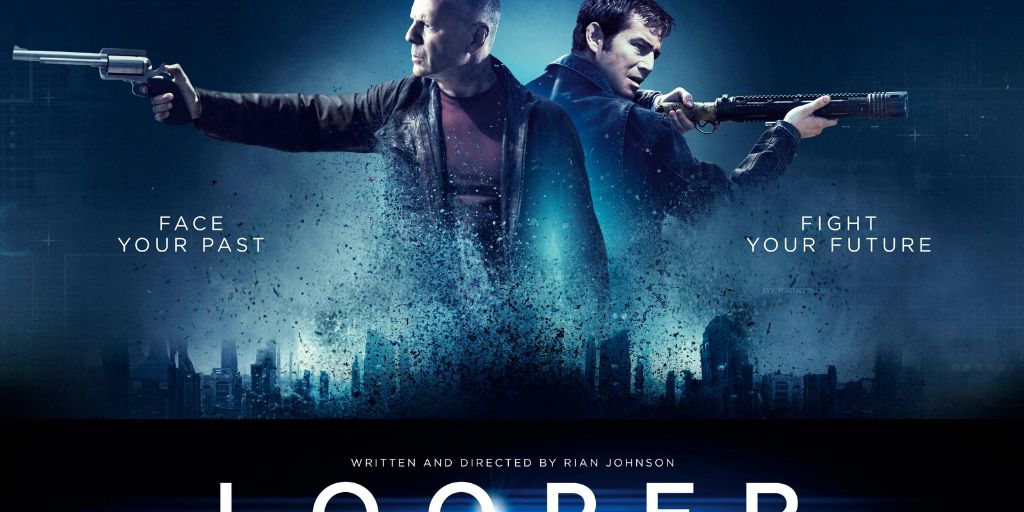
12. Unbreakable (2000)
This intriguing puzzle of a movie demonstrates M Night Shyamalan’s growth as a distinctive, though not outstanding, filmmaker. The writer, producer, and director easily develop his unique tone and feel in every scene and frame of this very weird and compelling film.
Unbreakable is, in some respects, an incomplete, unrealized movie, but it leaves a lasting impression on the viewer. Without its defects, idiosyncrasies, and longueurs, the movie would not be what it is today. This ghostly thriller with a twist, starring Bruce Willis, is similar to The Sixth Sense.
Your mind will frantically go back to the beginning after reading the ending to make sure you understand everything correctly. Contrary to The Sixth Sense, there is some uncertainty because we are unsure of how much of what we have seen is false.
Additionally, and perhaps most importantly, the twist’s overall concept—the surprising conclusion that the critic cannot reveal—is diminished in intensity but broadened in scope. In Unbreakable, the twist is debatably the conclusion, but it’s also debatably the film’s genre as a whole, as well as its middle and beginning. Unbreakable may have a huge twist!
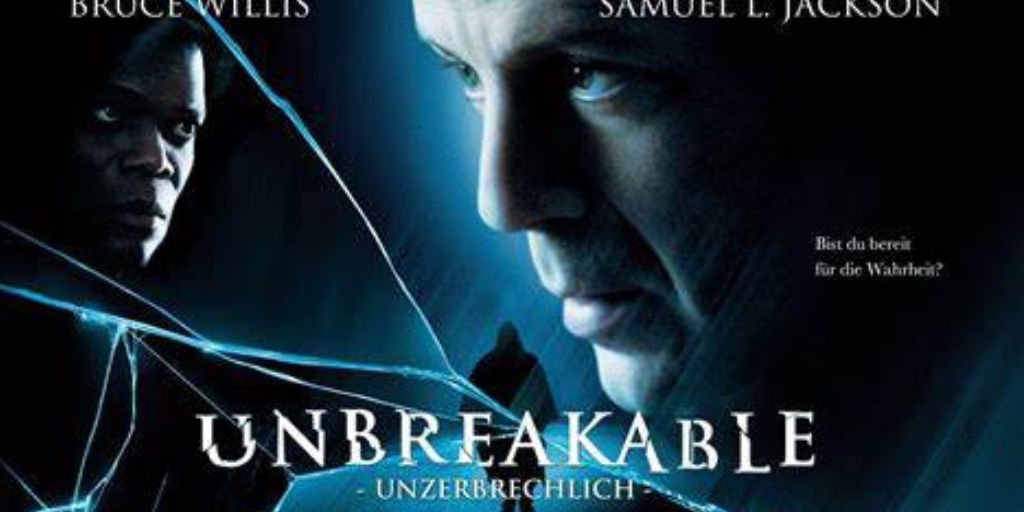
13. Die Hard 2 (1990)
Bruce Willis competes in a decathlon of violence in “Die Hard 2,” subtitled “Die Harder,” winning every event, including grappling for guns, jumping onto conveyor belts, being ejected from cockpits, leaping onto moving airplane wings, and battling with the police.
This is a thriller that falls under the category of “Bruised Forearm Movies,” along with the “Indiana Jones” series, since by the time the credits roll, your forearm will be bruised from your date grabbing it during the suspenseful scenes.
Why does Willis perform so well in a film like this? Maybe because he combines an All-American appearance and demeanor with a rather athletic build. The primary story device is implied by the film’s title: Here is a man who persistently perseveres in the face of difficulty and refuses to concede defeat.
James Bond would be intimidated by the challenges and risks he must overcome, but this open-faced detective with a receding hairline has no option. “My wife is on that plane,” after all. He performs the role of a cop on vacation once more. On a busy evening during Christmas, he is waiting for his wife’s aircraft to land at Washington’s Dulles airport.
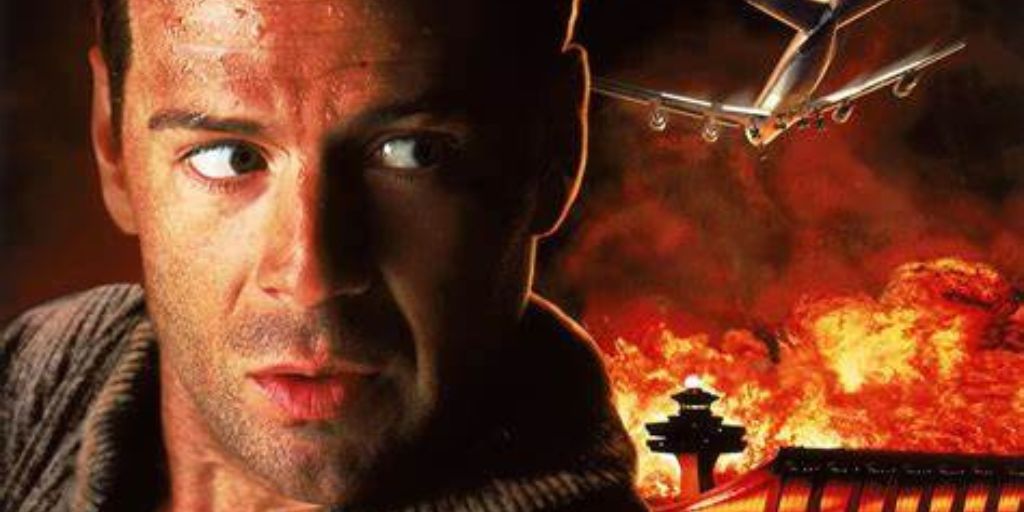
14. Live Free or Die Hard (2007)
The plot of Live Free or Die Hard, which takes place over the Fourth of July weekend, centers on a massive computer attack on the American infrastructure, which is so weak that it goes down nearly instantly. Who or what is the mystery bad guy orchestrating this “fire sale” attack (everything must go)? John McClane of the NYPD and Cliff Curtis, who is in charge of the FBI’s cybercrimes division, are looking into this.
McClane is reintroduced when he makes an effort to reintegrate into the life of his estranged daughter Lucy (Mary Elizabeth Winstead). She doesn’t want anything to do with her father, and like her mother before her, she goes by the surname Gennero instead of McClane.
When McClane is instructed to pick up a teenage hacker called Matt Farrell (Justin Long), who is wanted by the FBI for questioning, fate surprises him, as it has so many times before. But John McClane never receives a task that is pleasant and simple.
The arrogant hacker discovers he might have unintentionally helped the unknown criminal harm the country after a group of mercenaries come dangerously close to killing Farrell and his unaware defender McClane.
Only Farrell is still alive while the bad guys are on the prowl for all the hackers who assisted them. The gunmen repeatedly catch McClane and Farrell, thanks to our hero, despite having access to the police and FBI radio channels.
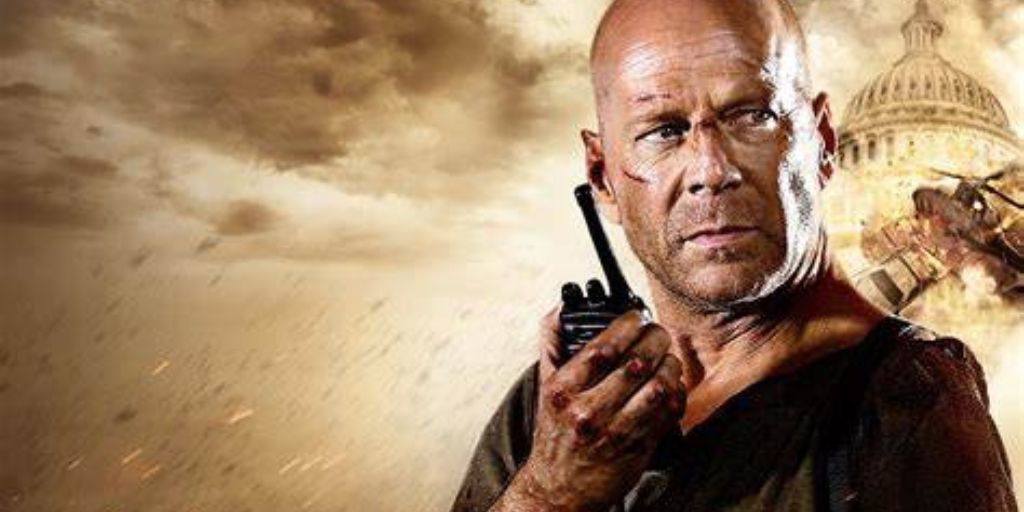
15. RED (2010)
The title of Bruce Willis’ film, “RED,” refers to his alert status rather than his hairstyle. He is a black former CIA agent who learns that terrible people want to kill him. He, therefore, calls together his former assassination team, and they plan a defense. Joe Matheson, Marvin Boggs, Victoria, and Ivan are the members of the cast.
There are a few things to keep in mind: Victoria doesn’t need a second name because she’s a woman in a thriller; Ivan is Russian because every Russian in a thriller goes by the name of Ivan; Malkovich might have accepted the part because he’s never considered for characters named Boggs, and Freeman discloses his liver cancer diagnosis early on.
So poor Morgan Freeman is left hanging once more. He prefers to portray the bad guy. He once told me that the villain is typically the most intriguing character in the film and that you can count on him to still be present for the final scene.
Bruce brings Sarah Ross (Mary-Louise Parker), a phone operator at the organization that manages his retirement plan, along with him in addition to his former teammates. Her voice has captured his heart. He says that because her life is in danger, she must flee with him.
She thinks this is reasonable, like any other federal worker. With a man who is the target of tens of thousands of rounds of automatic weapon fire, her life will be much safer.
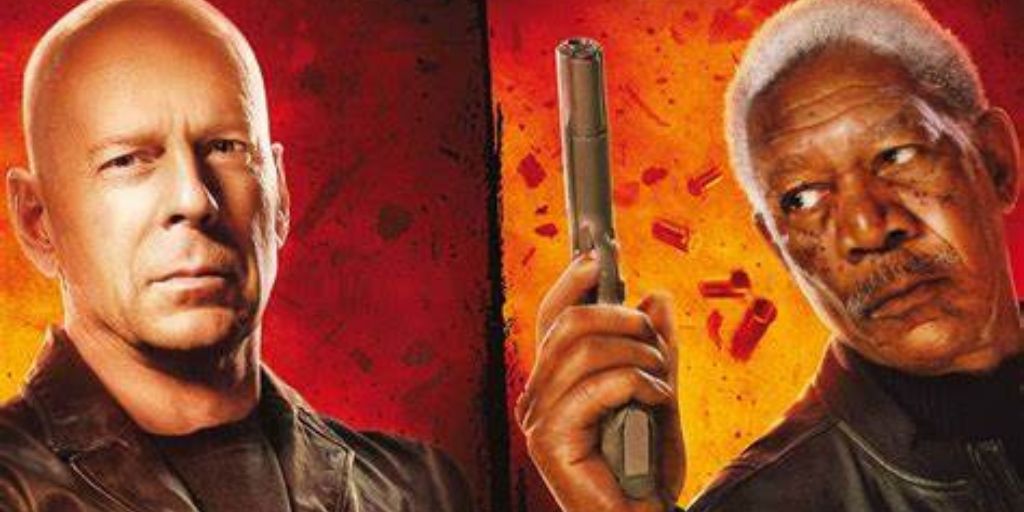
16. The Last Boy Scout (1991)
The opening sequence of “The Last Boy Scout” is filled with startling, unexpected violence that sends the audience into a tense hush. Never does the film go back. This movie panders to the baser instincts of the action crowd with such tenacity that it will undoubtedly be a huge hit.
This resolve may have been inspired by the star, Bruce Willis, who is determined to break the box office curse of “Hudson Hawk.” It was made by Joel Silver, whose films frequently feature violence against women, and it cheerfully expands its focus to include violence against children by giving Bruce Willis’ character a foul-mouthed 13-year-old daughter who is carried around by villains while having a gun pointed at her temple.
The fact that this content succeeds despite its utter cynicism is in some ways a testament to Tony Scott, who directed the movie, and in particular to Shane Black and Greg Hicks, who created the screenplay. As I watched it, I had the impression of an aged child from a simpler time. It didn’t matter how I felt.
The future is this movie. The idea is that the typical audience today only adheres to mob standards. The film’s loathing of women is its single recurring subject. The wives of the two heroes, one with Willis’ best friend and the other engaging in self-prostitution, respectively, cheat on them. In this script, which particularly despises women, both men are at home.
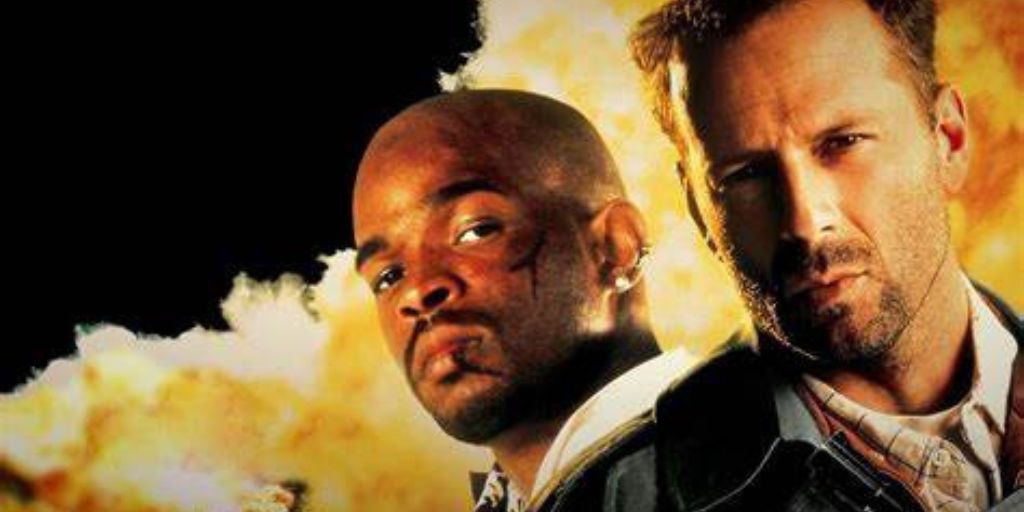
17. Alpha Dog (2006)
In the San Gabriel Valley in 1999, Johnny Truelove is a young drug dealer. His father, the Sonny, gives him marijuana, which Johnny distributes together with his circle of buddies, including Jake Mazursky, an addict who is also in debt to Johnny. Frankie Ballenbacher, the group’s muscle.
Elvis Schmidt, who is made fun of for being in Johnny’s debt, and Tiko Martinez. While Zack, Jake’s younger half-brother, looks up to him and longs to leave his family, Jake tries to borrow money from his father and stepmother.
When Jake tries to pay Johnny only a portion of his debt, a fight breaks out. As a result, Jake is fired by Johnny, and as payback, Jake breaks into Johnny’s apartment. Jake is unable to be found when Johnny confronts him with Frankie and Tiko.
When Johnny sees Zack by the side of the road, he makes the snap decision to have the gang kidnap him and detain him until Jake pays the bill. Zack does not attempt to leave the house but simply wants a break, so they take the car to Palm Springs. Zack declines Frankie’s offer to go since he doesn’t want to trouble his brother.
Frankie is left to babysit Zack. While staying at Frankie’s dad’s house, Zack makes friends with Frankie and gains the respect of his pals Keith, Julie, Sabrina, and Susan; only Susan is worried about Zack’s kidnapping. Johnny agrees when Frankie offers that they pay Zack to stay quiet about the kidnapping.
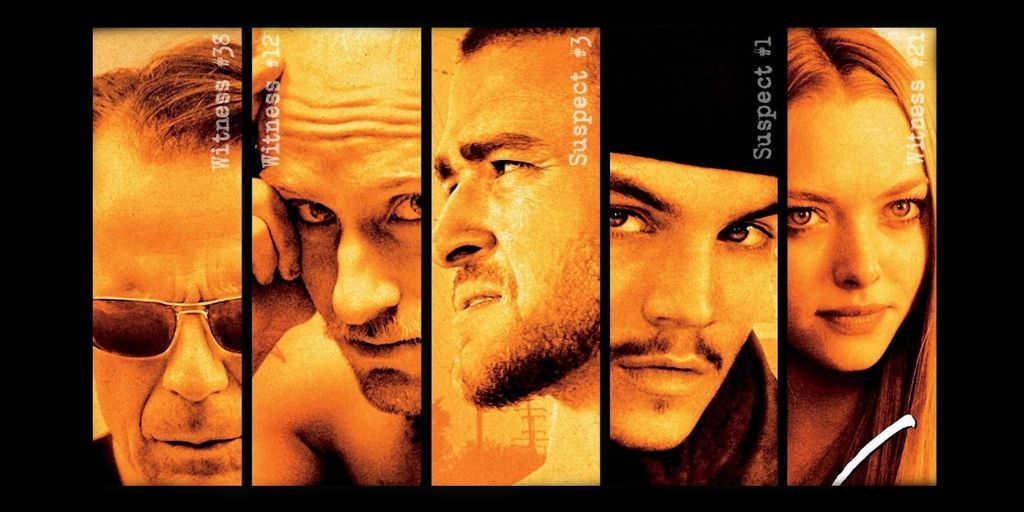
18. Beavis and Butt-Head Do America (1996)
Without first dealing with Beavis and Butt-Head, it is impossible to address “Beavis and Butt-Head Do America.” Since B&B are “about” attitude, attitude is the true focus of the movie. What occurs isn’t that important because Beavis and Butt-Head are so ignorant and so self-absorbed that they don’t have any connection to the outside world other than as a source of irritation or distraction.
It would be simple to criticize B&B as being illiterate, rude, depraved, and disgusting slobs. Naturally, they are. But that would be missing the point, which is that some aspects of the culture that gave rise to Mike Judge’s characters are reflected in them.
Studying B&B teaches students about the narcissistic, alienating, functionally illiterate, quick gratification-obsessed, television-zombie culture. Those who criticize Beavis and Butthead mix up the messengers’ message with their own. Happiness is a simple concept for B&B.
They watch television while seated next to each other on a sofa, barely perceiving that it is showing scenes of food, alcohol, mayhem, and huge breasts. B&B doesn’t feel the need to relocate as long as the TV is on and there is food and drink available. If the set was functioning, they would be just as content in jail.
In a humorous scene early on in Mike Judge’s “Beavis and Butt-Head Do America,” their television is taken. After some while, B&B recognize this because they notice they are staring at the spot where the TV should be but is not.
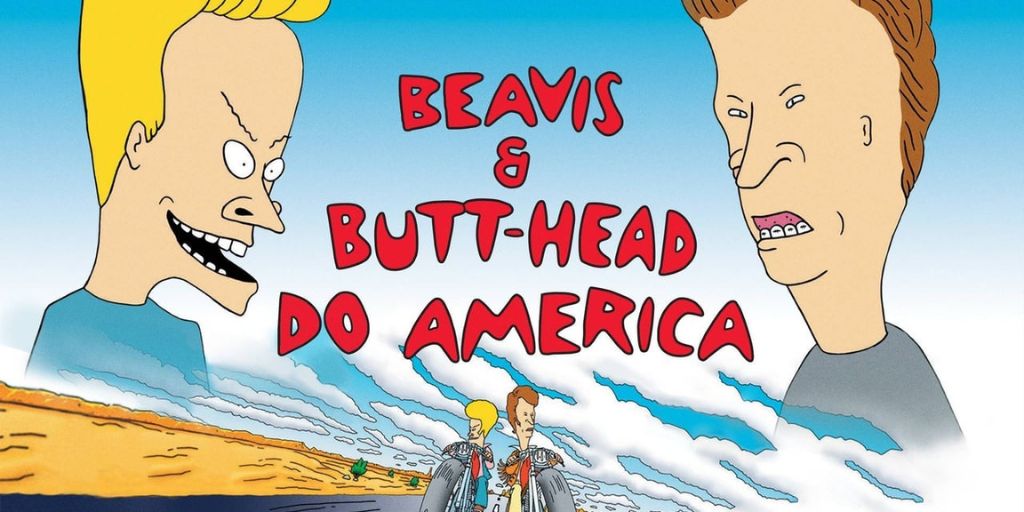
19. Armageddon (1998)
Compared to “Armageddon,” the plot of the contemporary film “Deep Impact” covers much of the same ground. “Deep Impact” is part of the American Film Institute list. Fast-forwarding the plot of the film, Bruce Willis plays an oil driller who is chosen to command two teams on an emergency shuttle trip to an asteroid “the size of Texas” that is due to strike Earth and wipe out all life, including viruses.
Their task is to drill an 800-foot hole and cram a bomb inside of it to detonate the asteroid before it destroys us. Let’s imagine you are successful in detonating a Texas-sized asteroid. What if only a portion the size of Dallas remains? Wouldn’t that be large enough to end Earth’s existence as we know it? Consider a chunk the size of Austin.
Let’s face it: Even a thing the size of that enormous Wal-Mart outside of Abilene, if you count the parking lot, would pretty much wipe us out. Texas is a large state, but it wouldn’t be able to produce much gravity if it were a celestial body. Yet when the astronauts arrive at the asteroid, they move around on it as though Earth’s gravity applied.
There is no sense of weightlessness until it is required, at which point an Evel Knievel-style lunar buggy soars across a rough canyon. The movie opens with a narration by Charlton Heston explaining how an asteroid killed off the dinosaurs. The brilliant “65 Million Years Later” title card follows.
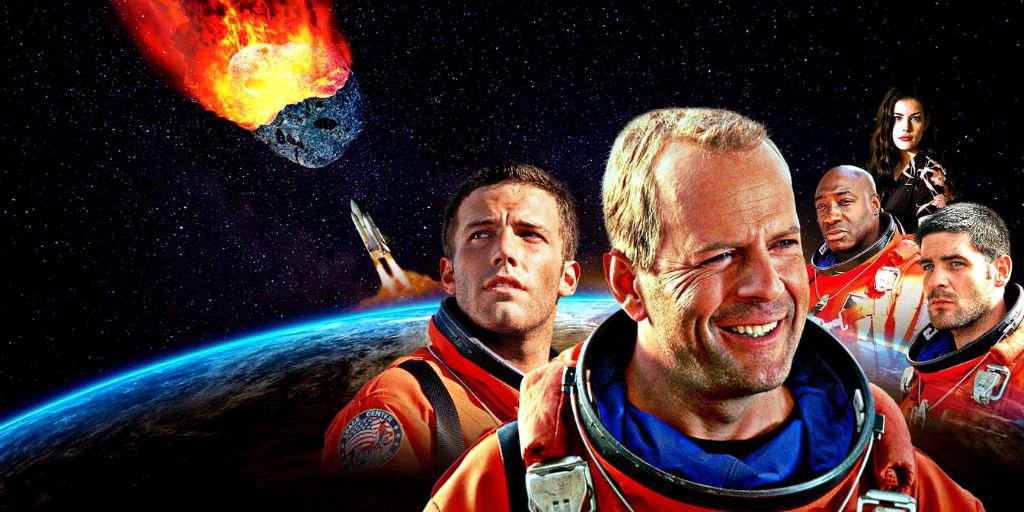
20. The Whole Nine Yards (2000)
Jimmy Tudeski, a seasoned hitman, also known as Jimmy the Tulip, serves as Jill’s inspiration. At the beginning of the movie, he has moved in next door to a dentist named Oz Oseransky from Montreal, whose wife, Sophie, is French Canadian and smokes cigarettes and longs for his demise.
This woman is so revolting that Jill, Oz’s dental assistant, suggests that “having her whacked would be a kindness to the world.” In “The Whole Nine Yards,” everybody is getting beat up. A Chicago thug named Janni Gogolak is looking for Jimmy the Tulip because he wants to beat him up.
So that they can receive the finder’s money, Sophie wants Oz to travel to Chicago and inform them about the Tulip. Oz doesn’t particularly want to do this, but he flies to Chicago and is led into the Gogolak presence under the strong arms of Janni’s goon Frankie Figs.
Every performer in the film has at least one juicy scene, and Pollak has fun with him by flinging out words like hot oysters while maintaining a thick accent. There is more to the story, but you’ll have to find it out for yourself. What I can explain is the actors’ sense of humor. Numerous hit guys have been played by Bruce Willis. This one needs to do nothing more than merely hint at the possibility of painful action.
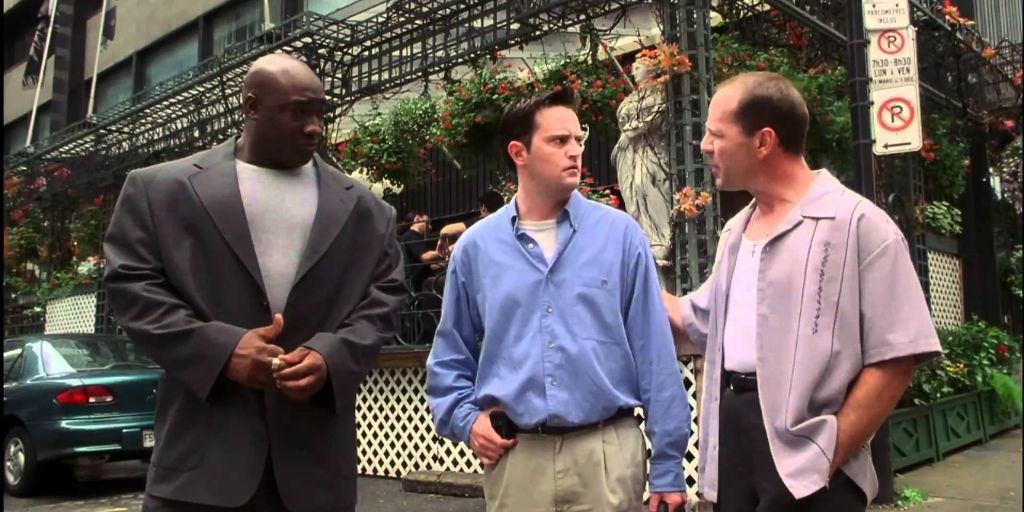
21. Four Rooms (1995)
The film “Four Rooms” is marketed as being produced by four friends. If they remain friends once this movie is over, that speaks something about their friendship. The bellhop, played by Tim Roth, serves as the connecting thread across the four interconnected storylines in this anthology film set in a run-down hotel.
The second thing they have in common is that Quentin Tarantino, their co-producer, is always accessible. In 1995, he spent the year proving that he could direct not only a fantastic film but also become the most common guest star since Tony Randall.
The four segments’ levels of excellence varied greatly. One Michelin guide is worth a trip, another is worth a detour, and the other two are a huge waste of bandwidth, according to the usefulness scale.
The film’s directors are Allison Anders, Alexandre Rockwell, Robert Rodriguez, and Quentin Tarantino, who ought to reserve their patented material for their quality films rather than using it in out-of-town auditions.
Rodriguez’s “The Misbehavvers” is the funniest and greatest of the four movies. When Ted, the bellhop, checks in a tough Latino guy, his wife, and their two young children, the story begins. In a parody of his typical macho stud portrayal, Banderas cracks up.
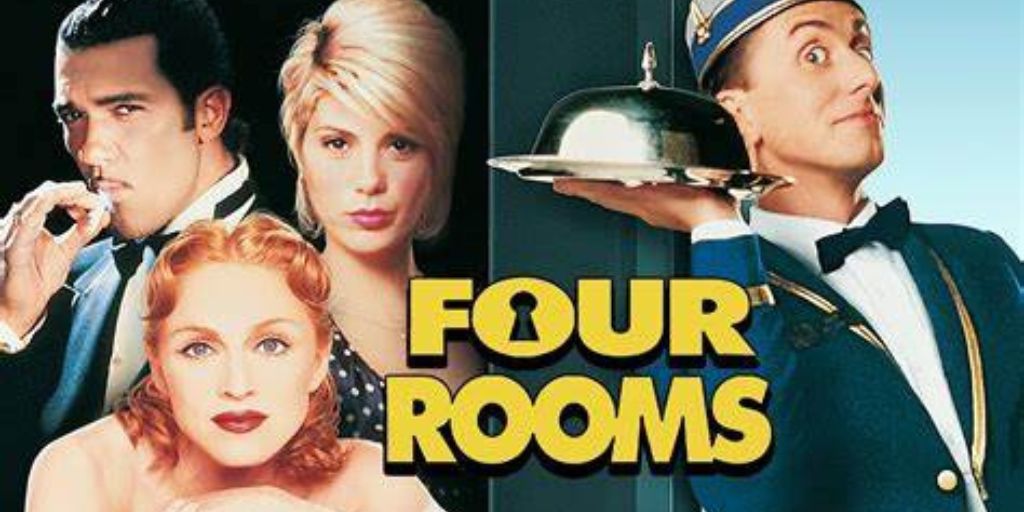
22. Death Becomes Her (1992)
In 1978, the story had its Broadway debut. Willis portrays nerdy yet incredibly gifted plastic surgeon Ernest Menville with great realism. They are attending a terrible musical adaptation of “Sweet Bird of Youth,” starring the legendary Madeline Ashton (Streep), who also happens to be Helen’s old friend or something, along with her plain fiancee Helen (Hawn).
Following the performance, Helen worries that Madeline will once more lure Ernest away from her. Ernest fawns over Madeline. When Ernest and Madeline do get married, all three of their futures are decided.
After seven years, we learn that Helen is still fixated on Madeline and Ernest’s treachery and has become an abhorrently obese hermit. Seeing our gorgeous Goldie in such a mess is quite unsettling since the makeup is so believable. Anyway, Helen ultimately thinks about getting revenge, and another seven years fly by.
The passion between Ernest and Madeline is now revealed to be so lifeless that it is already starting to deteriorate. When a servant wakes up Ernest, who is drunk and sprawled out on the floor, he asks, “Is it up yet?” This gives us a feeling of what is going on.
When a newly slim Goldie returns into their lives, the stage is now set for a struggle of wills that gets pretty physical. Without giving too much away, Helen and Madeline both wind up ingesting a mysteriously weird Isabella Rossellini concoction that promises to keep them young forever. This causes these two immortals to engage in a vicious fight that would make a Terminator proud.
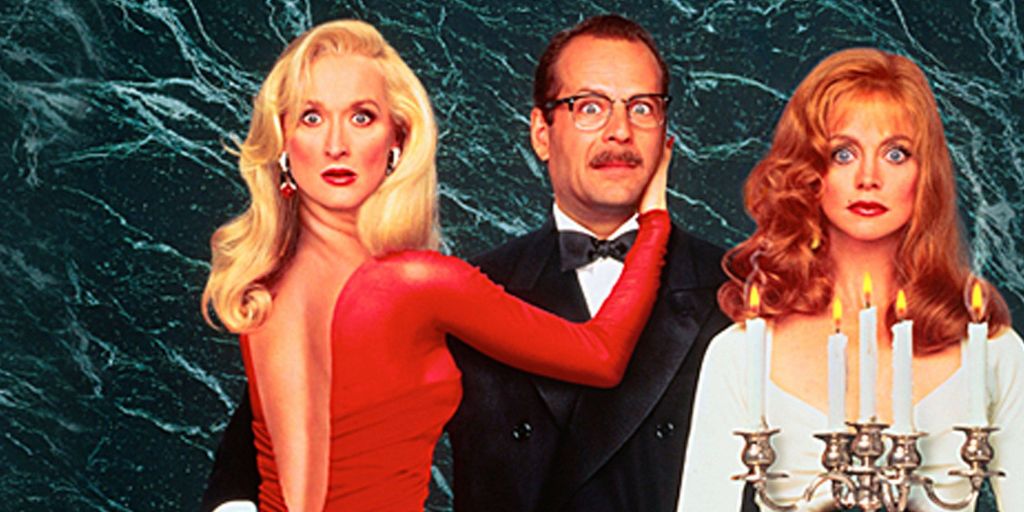
23. The Expendables 2 (2012)
The Expendables 2 is the action-packed, star-studded epic that many fans had hoped for from the original movie, thanks to Con Air’s Simon West, who takes over directing duties from Sylvester Stallone. The storyline is straightforward: While on a mission abroad, the titular mercenaries lose one of their own.
Then, seeking terrible vengeance against the evil Jean Vilain and his private army—who also just so happen to possess six tonnes of plutonium suitable for weapons—is their goal! To complete the mission, The Expendables will need assistance from other veteran badasses, including Trench, CIA agent Mr. Church, and the intriguing Booker.
The Expendables 2, a bigger, bolder, and more badass sequel to the first don’t let down the action fan’s dream cast. This isn’t a great movie in the traditional sense, but it is a tonne of silly fun and an old-fashioned action movie that serves as a trip down memory lane for lovers of the muscle-bound shoot ’em-ups of the 1980s and 1990s.
From the team’s initial rescue of a kidnapped Chinese billionaire to the film’s climax airport battle in which the entire cast faces off against Van Damme and his goons, the action is nonstop. Stallone and Van Damme’s much-anticipated man-on-man fight is as brutally spectacular as you’d expect, with the former demonstrating his boxing badassery and the latter his still-impressive kickboxing talents.
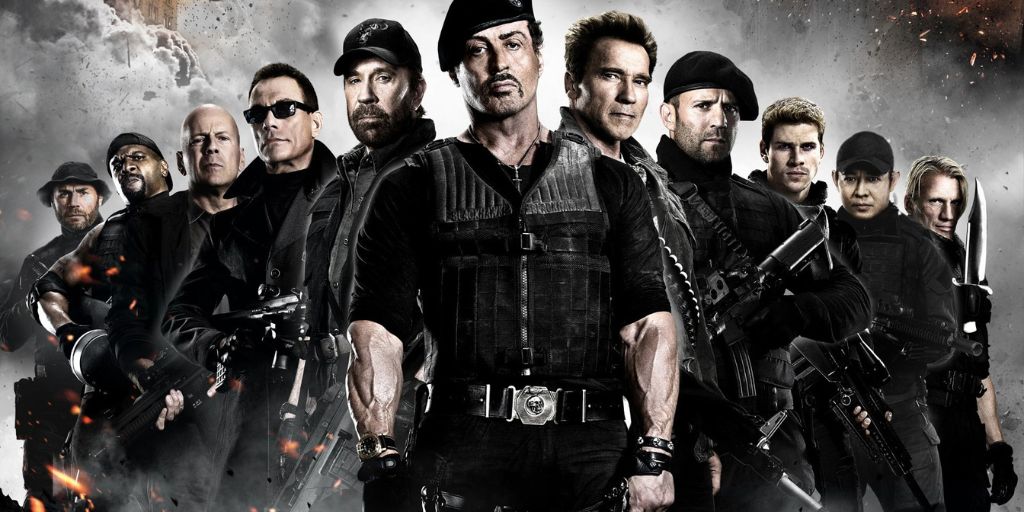
24. Tears of the Sun (2003)
“Tears of the Sun” is a movie made of rain, beautiful photography, and Bruce Willis’s face. These resources are enough to create a movie that is nearly as good as one that has a stronger screenplay. In situations like this, the editor is frequently to blame because they can use what is left to effectively hide what is missing.
To evacuate four Americans to safety, a Navy Seals unit is sent into the heart of the Nigerian civil war. At the same mission hospital, they all work. Two nuns and the priest both refuse to go. The doctor, an American widow, is initially antagonistic as well, but after some convincing, she agrees to be saved if she can also bring patients. She is unable.
They and eventually Lieut cannot fit on the helicopters. Waters drags her aboard by force. But then he comes to his senses. They observe places already set on fire by approaching rebel troops as the chopper circles back over the site. He struggles to look the woman in the eyes, Dr. Lena Hendricks.
Let’s reverse it, Willis says. Once they have collected about 20 patients who can move around on their own, they call for the helicopters to take off again. They will all need to walk through the bush to Cameroon to be rescued because he defied explicit orders, and his supervisor will not risk the helicopters.
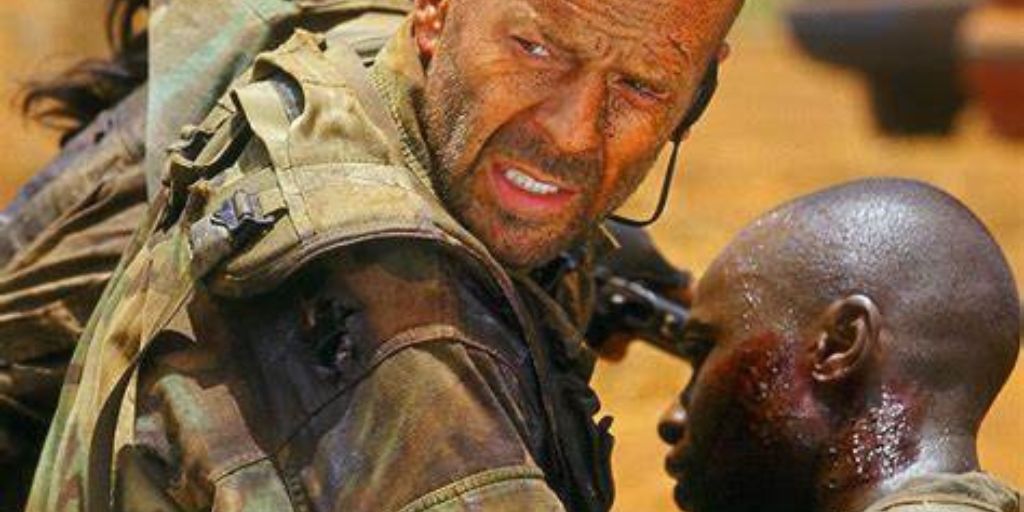
25. RED 2 (2013)
For “retired and extremely hazardous” black-ops CIA agent Frank Moses and his crazy civilian girlfriend, Sarah, marital bliss doesn’t last long. A U.S. official threatens Frank and questions him about his potential connections to a real weapon of mass destruction that vanished during the Cold War just after his old comrade Marvin Boggs dies in an explosion – it’s no spoiler to say that he doesn’t stay dead for long.
Soon after Frank escapes, ducking and unleashing a hail of bullets in one of the film’s many heavy-artillery action scenes, he learns that he is the target of not one but two assassins: the much more dangerous Han and the regal sharpshooter Victoria.
Frank tries to keep Sarah out of harm’s path even though she is only too prepared for some transatlantic peril as they travel to Europe in search of answers with Marvin. The script wastes little time in introducing new characters as it zips from London to Paris to Moscow.
Many of them are presented with the kind of convenient one-phrase sound bites that foresee a greater investment in the plot than most viewers will want to muster. The idea that Han is “the best contract assassin in the world” and sultry Russian spy Katja is “Frank’s kryptonite” instead of just our hero’s ex-girlfriend seems to be intended to amaze the audience.
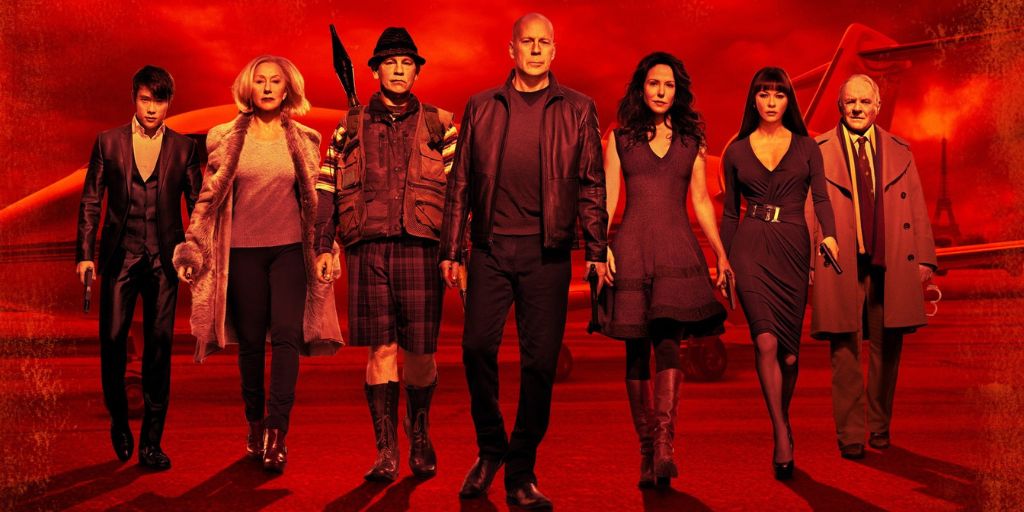
26. 16 Blocks (2006)
In “16 Blocks,” Bruce Willis portrays Jack Mosley as a worn-out drinker. He is a detective who lacks the stamina to be a police officer. He is surrounded by dead bodies and cocaine spills when the movie begins, and a police officer orders him to “Sit on this till the uniforms get here.” Jack looks around the flat until he locates the bottle he needs.
He gets a drink for himself and settles in to wait for the uniforms. He then returns to the main office, where the receptionist gives him breath fresheners. The shift for Jack is ended. A new job is the last thing he needs. However, he is given the task by his supervisor to drive a witness 16 blocks to a grand jury meeting.
The grand jury’s time is up in two hours. Therefore the witness must show up then. Eddie Bunker, played by Mos Def as a motormouth who constantly, and I mean constantly complains about his treatment, his life, and his fate, is the person Jack goes to get.
Eddie has a voice that is similar to Kenny G, which is the sound of nails on a blackboard. The task appears to be simple. Drive 16 blocks with a man in the driver’s seat. Jack is unable to make all 16 blocks. He visits a booze store as a pit stop.
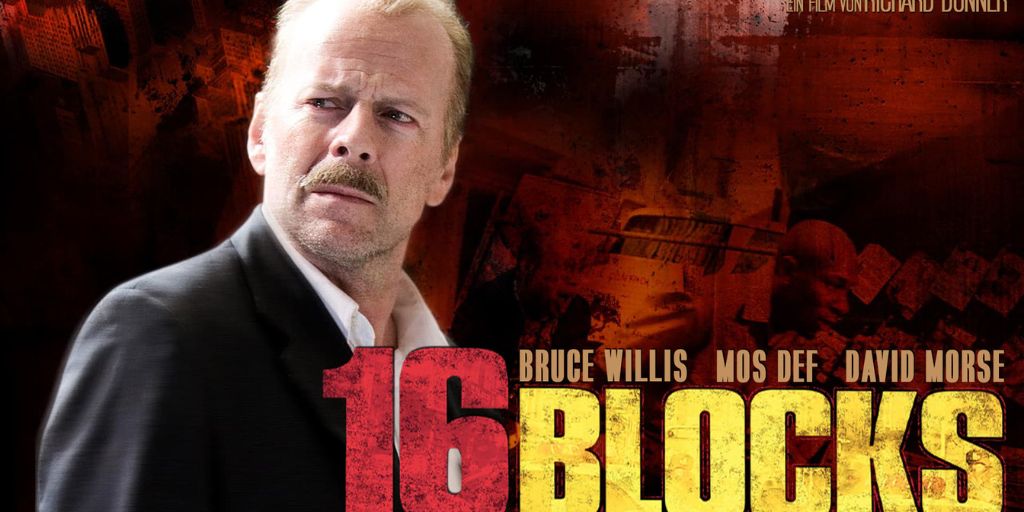
27. Sin City: A Dame to Kill For (2014)
A Dame to Kill For will probably feel like seeing an old acquaintance of Sin City aficionados. As with the first, the movie weaves together several Frank Miller’s Sin City stories, including two that were already published, “Just Another Saturday Night” and “A Dame to Kill For,” and two that were created especially for it, “The Long Bad Night” and “Nancy’s Last Dance.”
The transition from one interlude to the next isn’t quite as smoothly presented as it was in the original, and at times the connecting tissue between the four can appear artificial and clumsy. The stories are simple, beat-for-beat mini-thrillers that closely adhere to noir conventions.
It’s the heightened theatricality of the approach and the performances that drive the film because there aren’t any genuine twists or surprises in the play, nor are there these nuanced character investigations.
If it weren’t for Eva Green’s performance as the eponymous Dame, Ava Lord, Mickey Rourke, who returns as Marv to lead the movie in both the first and last tales, would probably be hailed as the standout. As the soulless woman propelled by an unquenchable hunger, Green is both breathtakingly evil and alluring.
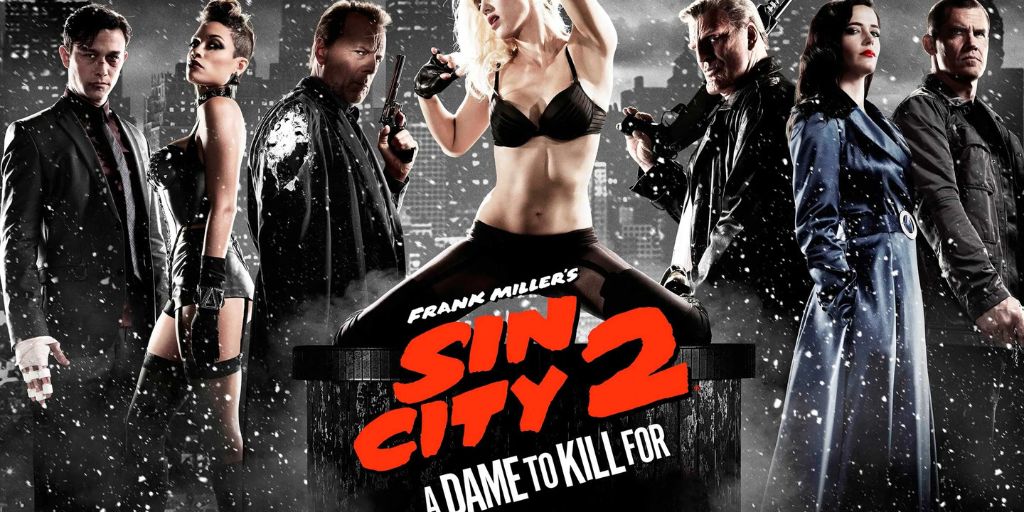
28. Hostage (2005)
The movie “Hostagecolor “‘s photography tends toward dark, high-contrast scenes, while the opening titles are shot in saturated blacks and reds with a raw graphic sense. That fits the melancholy and gritty atmosphere.
In this film, Bruce Willis, who feels more like a resident of action movies than a visitor, dials back into a man of strong focus and private purposes; for the majority of the second half of the film, only the antagonists are privy to his true motivations.
The three initial villains from the film are used intriguingly, and they are eventually joined by more villains from altogether different fields. Three horny adolescents in a pickup truck pursue a wealthy girl as she is driven to a hilltop house with intimidating security measures “in her daddy’s Escalade” as the movie opens.
The Cadillac was intended to be stolen. These individuals are Dennis and Kevin Kelly, two brothers, and Mars, a nasty customer with a history. Kevin, the younger brother who is tagging along, is horrified by the illegal activity. Mars gets his brother into it.
When the police arrive in response to an alarm, they find Smith, a wealthy man, his teenage daughter Jennifer, and his infant son Tommy trapped inside the home and take them as hostages. Willis portrays the police chief in charge of the first reaction squad; however, following a disastrous hostage situation in Los Angeles, he retired to Ventura County to prevent similar misadventures.

29. Bandits (2001)
The movie “Bandits” is so intent on being witty and amusing that it forgets to be anything else. That choice wouldn’t have been fatal if the film had finally conceded that it was a comedy, but it also tries to include poignant, suspenseful, and insightful moments, and it lacks the structural integrity to support them.
It’s a collection of disparate tones; while some scenes may work well, they don’t appear to understand what kind of movie they’re in. Additionally, the love triangle can’t decide if it’s a romantic comedy or a romance. Why should we commit if the movie won’t? It’s unusual for a film to have three such likable characters while yet being so unlikeable.
As “America’s most famous bank robbers,” Bruce Willis and Billy Bob Thornton are the stars of the film. Cate Blanchett plays Kate, the executive’s wife, who initially acts as their captive until falling in love with them. They both do, indeed. She has no option.
She admires Joe for his courage, strength, and good looks and Terry for his cuteness and sensitivity. The star of the show is Thornton’s character, a neurotic, terrified hypochondriac who is lactose intolerant, has psychosomatic paralysis, and has a phobia of old furniture.
After Joe steals a cement truck, the partners escape from prison. A great picture shows the cement truck tearing through residential backyards. The night before a job, Terry has the brilliant notion to kidnap bank managers and hold them captive in their houses.
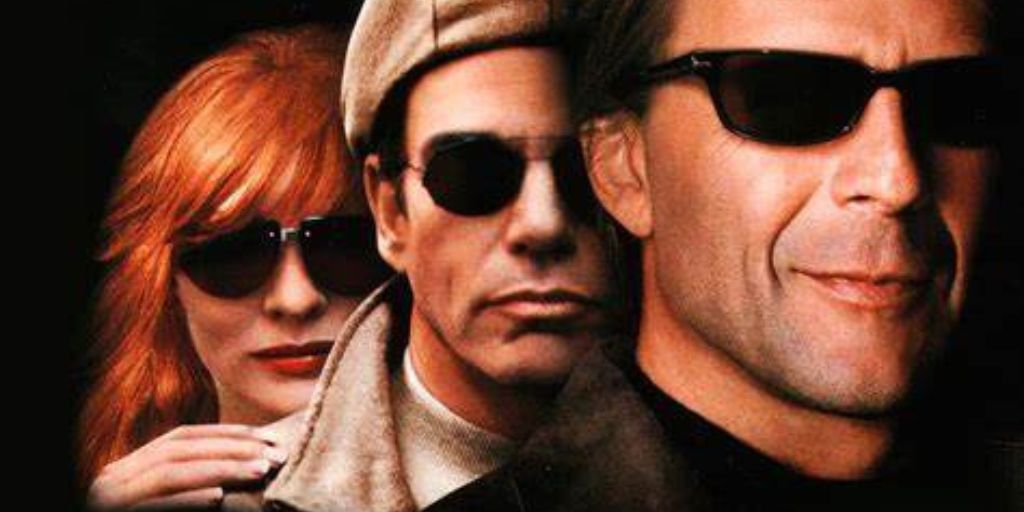
30. The Jackal (1997)
A guy goes to tremendous lengths to design a crime that anyone in the audience might execute more swiftly and effectively, according to the gloomy, oddly bland thriller “The Jackal.” a case in point Reader, can you conceive of a simpler method to enter the United States illegally from Canada than by purchasing a sailboat and entering it in the Mackinaw to Chicago race?
There must be a crossing place along the fabled 3,000-mile border that receives less attention than a regatta’s finish line. The Jackal does indeed have the funds to purchase the boat. He is asking for $70 million to kill the FBI director, with half of that amount payable upfront.
The boss of the Russian Mafia, like many other foreigners with an extra coin in their pockets, hires him and is unaware that he is being overcharged. According to what I’ve heard, there are men in this town who would gladly take a whack for $10,000.
The 1973 classic “The Day of the Jackal” by Fred Zinnemann served as the inspiration for the screenplay for “The Jackal.” We were amazed by the level of knowledge in that movie, and we got the impression that it knew exactly what it was talking about. On the other hand, “The Jackal” impressed me with its ridiculousness. There wasn’t much of it that I could consider serious.
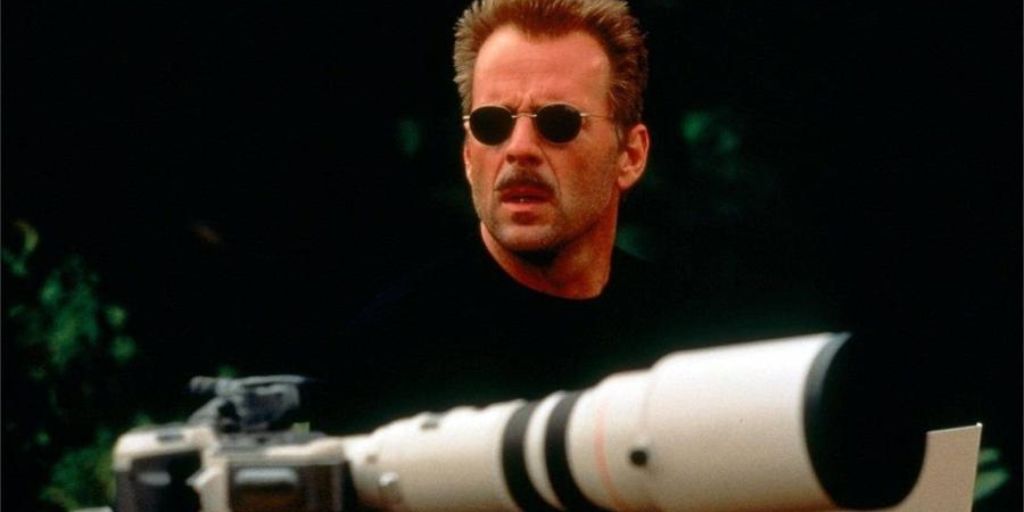
31. The Siege (1998)
“What if they were African Americans? Suppose they were Italian.” These lines from “The Siege” are said by an unnoticed character, but they capture the essence of the story, which is about the roundup of Arab Americans when terrorist explosives attack New York City.
Okay, but what if they were Italian or Black? What if the film was a fantastical account of the army violating the civil rights of American Irish, Poles, and Koreans? That would be the same as rounding up the Arab Americans, wouldn’t it? Not, as there are several emotions at play. Only the Arabs are members of one of our ethnic groups that are at present engaged in an indefinitely delayed conflict with the United States.
Although the vast majority of Arab Americans are patriotic citizens eager to join the rest of us in the melting pot, a small fraction has received significant media attention, particularly in the wake of the World Trade Center bombing in New York City. Many Americans are unable to make these distinctions and cannot mark the Arab nations we believe to be hostile, neutral, or friendly on a list.
“Towelheads” have the propensity to get grouped. Targeting Arab Americans is not the same as targeting other ethnic groups at this time because they feel particularly exposed to the kinds of events depicted in the film. Oh, the film tries to tone down its content. One American remark in the movie, ignorant of the contradiction in the “they” and “we,” “They love this country as much as we do.”
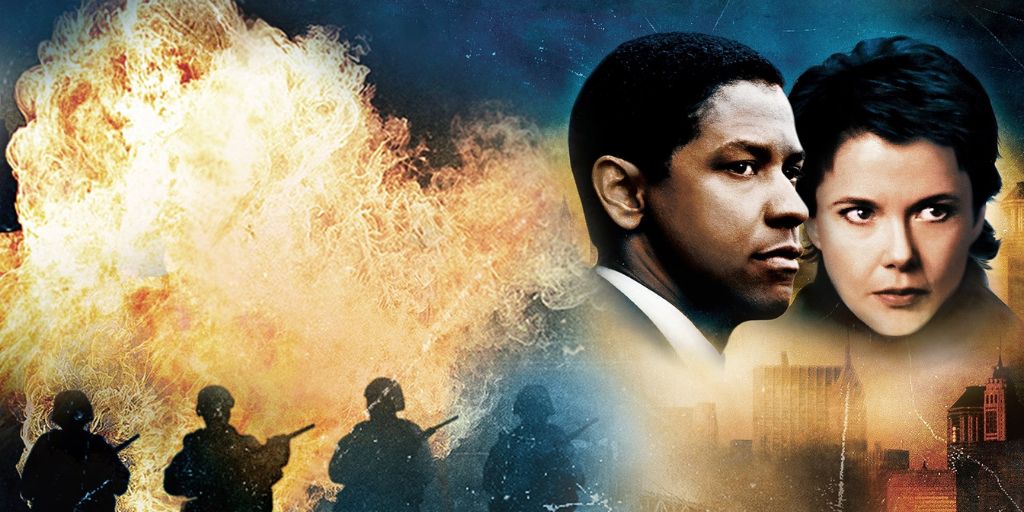
32. Last Man Standing (1996)
You wonder whether the filmmakers ever considered that “Last Man Standing” could be… fun because it is such a depressingly depressing movie, so dry and laconic and wrung out. Guns, gangs, and dramatic displays of death are among the components that are frequently found in entertainment, yet they are presented here as crouching, growling figures on the screen.
Even the protagonist of the film is unsavory. In the film, Bruce Willis plays a stranger who arrives in the Texas hamlet of Jericho during Prohibition and claims to be named John Smith. It’s a bizarre town with buildings that look like they belong in an 1880s Western, cars from the late 1920s, and two local bootlegger gangs that have come to an uneasy ceasefire.
The end of that. Except for the sheriff, the bartender, and the undertaker, there aren’t any other non-gang residents of Jericho, as far as I could discover. John Smith walks in for a drink, and the bartender says, “I won’t say business has been fantastic recently.” I’m serious.
Who are the customers of the bootleggers? Is Jericho merely a hub for distribution? So why are there two practically endless armies of gangsters lounging around, one imported from Chicago, both dressed in fedoras and business suits? I realize I’m missing the point.
The television show “Last Man Standing” does not aim to portray anything realistically. Some moviegoers will recognize the storyline outlines from Kurosawa’s “Yojimbo,” given that the film’s credits state that it is based on a story by Ryuzo Kikushima and Akira Kurosawa.
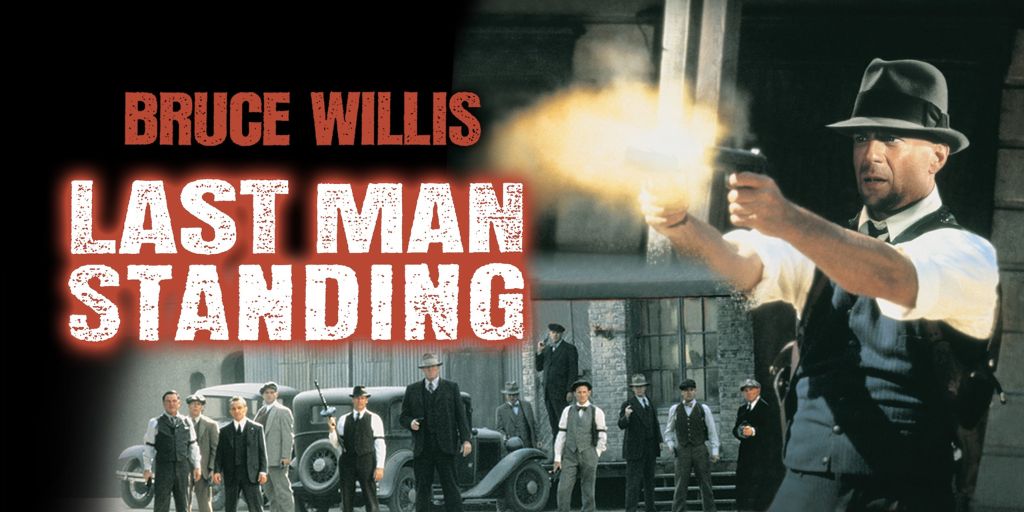
33. Surrogates (2009)
In the dystopian society depicted in “Surrogates,” the majority of people lounge around their homes doing nothing but thinking through robot avatars. Since the avatars exercise at gyms rather than their owners, I presume that they show themselves to the world as younger and more attractive than they are. Nobody you encounter is there.
Greer, an FBI agent, is portrayed by Bruce Willis, who looks around 38 and has a thick head of hair. He and his partner Jennifer Peters are tasked with looking into a nasty murder that happened late one night outside of a club. They are shocked to learn that the victim is the son of surrogate technology pioneer Dr. Lionel Canter.
But hold on, you say to yourself. If only your surrogate is slain, who else perishes? The alarming explanation is that the murder device operates by burning out the controller’s brain. When it happens, I detest it.
Dr. Canter has lost faith in his creation and is no longer affiliated with the company that produces surrogates. Agent Greer’s inquiry takes him deeper and deeper into the world of the Dreads, who are real humans who reject surrogates and inhabit “reservations” alongside other real people. The Prophet, the dread leader, preaches that avatars are abominations.
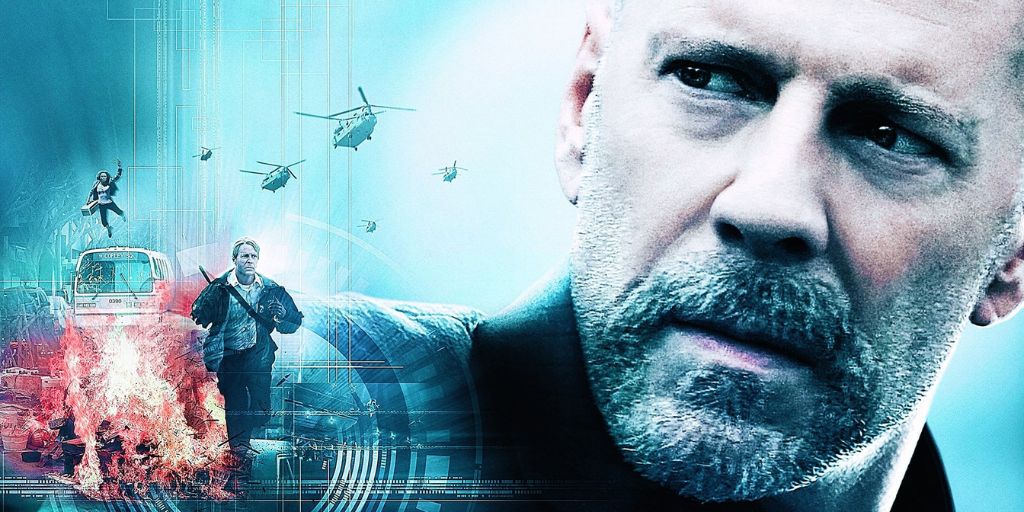
34. Hart’s War (2002)
Hart has been arrested, questioned, and transferred to Stalag VI in Belgium as the film commences. He is the son of a senator and will work at a desk. He is cross-examined at the POW camp by Willis, who suspects that he is lying about the interrogation and places him in a barracks that is otherwise occupied by enlisted men.
Willis adds that there is a space issue, and a few days later, the officers’ barracks are once more overcrowded and unable to house two downed black Air Corps pilots, Lt. Lincoln Scott and Lt. Lamar Archer. Vic Bedford, a staff sergeant, dislikes the idea of the pilots sharing a room with black men and refers to them as “flying bellhops.”
Soon after the Nazis find a tent spike that may be used as a weapon under Archer’s mattress, they summarily execute him without giving him a chance to defend himself. Nobody is shocked when the man is discovered dead shortly after, with Scott standing over his body because it is obvious that Bedford planted the spike.
It’s a blatant murder, right? Hart disagrees, claiming that this is a further setup and that a trial should be held. While the Nazi commandant is in favor of the proposal, Col. McNamara is not, and soon a court-martial with Hart representing the defendant is underway.
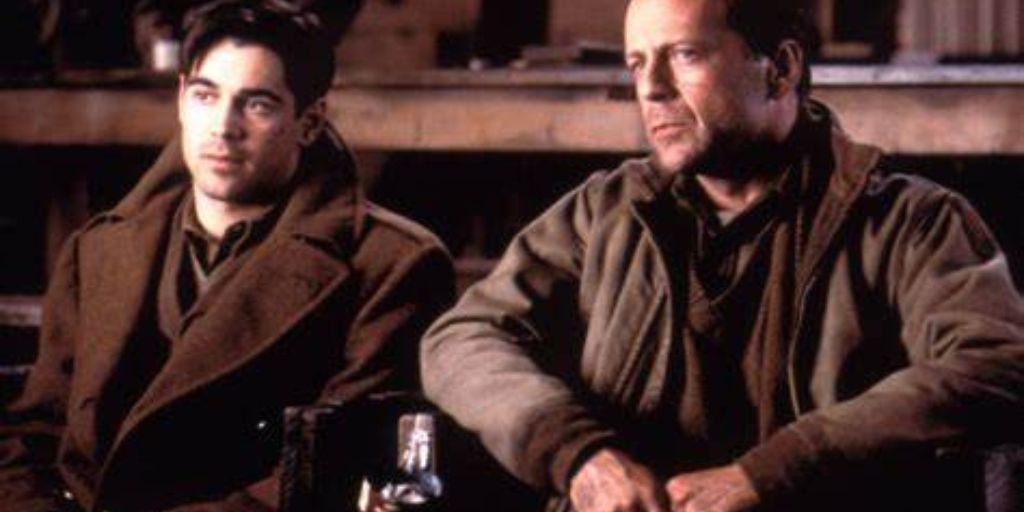
35. The Kid (2000)
Russ Duritz, a successful but obnoxious image consultant in Los Angeles who is approaching his 40th birthday, has a tense relationship with his father. When he gets home one day, he discovers a toy plane on the doorstep and an odd youngster inside, whom he chases through the neighborhood.
Russ observes the child enter a diner but discovers no trace of him inside. He consults a psychiatrist because he believes he is having hallucinations, but when he gets home, the same boy is watching TV and eating popcorn on his couch. The young youngster introduces himself as Rusty and claims that he is only looking for his toy plane.
When Russ compares memories and birthmarks and notices a likeness, he discovers that Rusty is a young version of himself. Rusty informs him, “I grow up to be a loser,” after questioning Russ. Russ gave up on his hopes of owning a dog named Chester and becoming a pilot.
Amy, a coworker of Russ’s, believes that Russ and Rusty are father and son and charges him with being a neglectful father. Rusty reassures her that he is not his son and begs Russ to be honest with her, but he believes she won’t take him seriously. While observing the two disputes, Amy sees the truth because they are so similar.
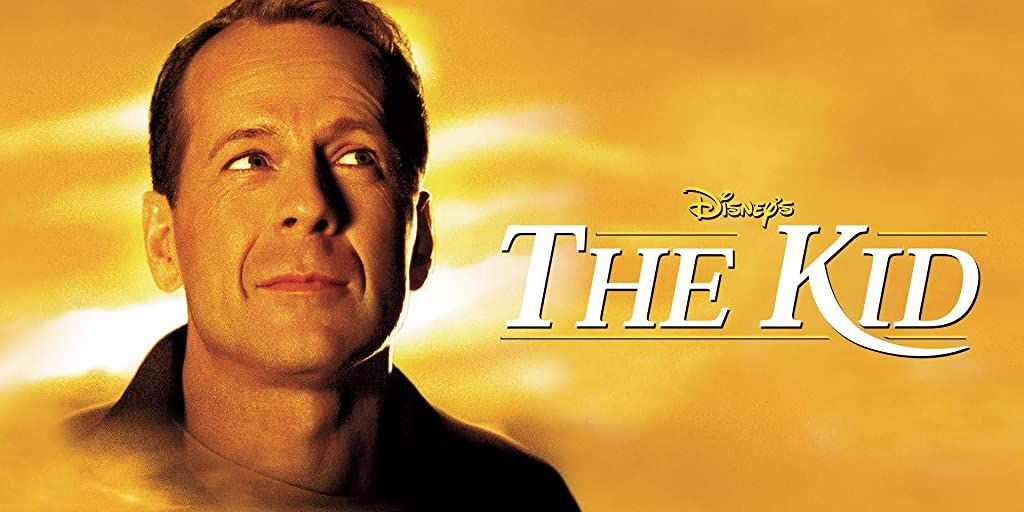
36. Look Who’s Talking (1989)
In the film, Alley plays an accountant who has a relationship with a snobby, egotistical businessman. She becomes pregnant, he betrays her, and all of a sudden, she is a single parent. When she experiences labor pains, and he is the taxi driver who rushes her to the hospital, she meets Travolta through one of the cliché movies Meet Cutes.
Travolta falls in love with the mother and the child for the rest of the lighthearted and heartwarming film. It’s simple to understand why he likes this movie because Alley exudes health and happiness, and I have to admit that the baby is gorgeous.
Reviewing a baby’s “performance” in a movie is pointless because newborns don’t pay attention to their directors when they’re acting, but in several scenes in this movie, the producers simply plain got lucky and captured some of the cutest baby moments I’ve ever seen.
Even the part where Travolta watches the child while Alley goes on a date with another accountant is predictable—if the baby isn’t. All of this has been done before, and yep, they even include the clichéd toupee sequence in which the infant takes the rug off the poor guy’s head.
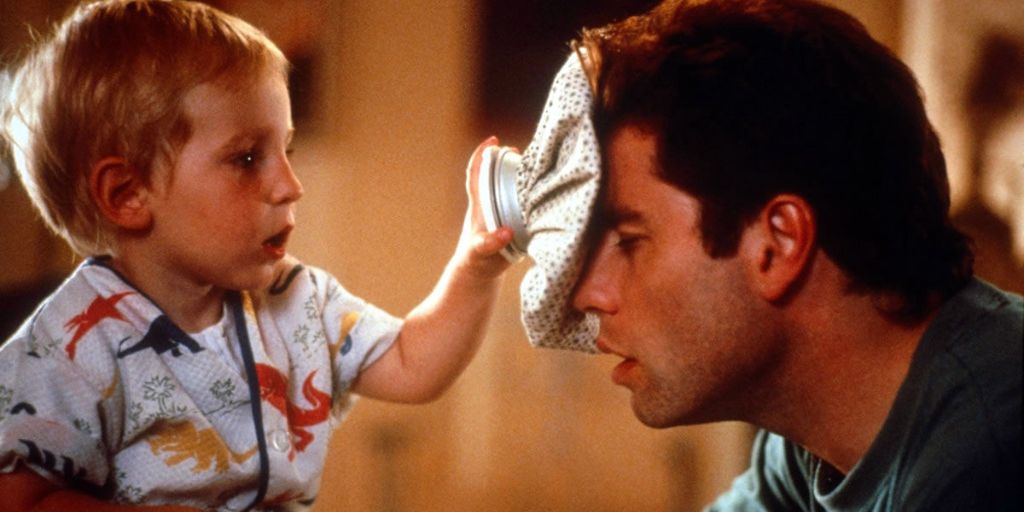
37. In the country (1989)
In Country by Norman Jewison is written more like a short tale than a novel. It creeps up on us with a succession of everyday occurrences that don’t seem to be leading anywhere in particular, then blindsides us with the concluding scene’s unexpected emotional impact.
Instead of character conflict, the focus is on individuals discovering more about themselves. The protagonist of the movie is Samantha, a 17-year-old living with her uncle in the sleepy Kentucky hamlet of Hopewell. He went by the name of Emmett and served in the Vietnam War.
Since then, he has spent his time walking in quiet and binge-watching television. Before Samantha was born, her father was slain in Vietnam. Her mother recently wed again. Sam is asked no less a question during the narrative than the significance of birth and fatherhood. She discovers some of her father’s letters home in her quest to learn more about her father.
There are also some ancient pictures of a soldier who was just her age at the time—a 19-year-old wearing a private’s uniform. Sometimes, she speaks to the picture, informing her father about the things he missed out on because he was killed in Vietnam, like Bruce Springsteen concerts.

38. G.I. Joe: Retaliation (2013)
Although G.I. Joe: The Rise of Cobra made some money, it was not well received, so Paramount decided to revamp the franchise with G.I. Joe: Retaliation. The new movie continues the plot lines and characters from the first movie, but it also makes some significant changes in terms of the cast and crew as well as the overall approach.
This is an odd combination of a sequel and a reboot. The early moments show how close Duke and Roadblock are to one another. They are two members of the Joe team who lead a squad that also includes Snake-Eyes, Flint, and Lady Jaye.
Only Roadblock and a few others are left, however, to attempt to identify the perpetrators and exonerate the Joes after they are attacked and falsely accused. The main advantage G.I. Joe: Retaliation has over G.I. Joe: The Rise of Cobra is that it seems more authentically like a G.I. Joe story and more fully embraces its origins. T
he power outfits the Joes wore previously, which felt utterly out of place, are no longer present. Although some fascinating future technology is employed, the action does not take place as the protagonists run through the streets engaged in combat. Oh, and there are no longer any new storylines presented in which Baroness is Cobra Commander’s sister and Duke’s ex-fiancé, and Duke or any other Joe are their best friends.
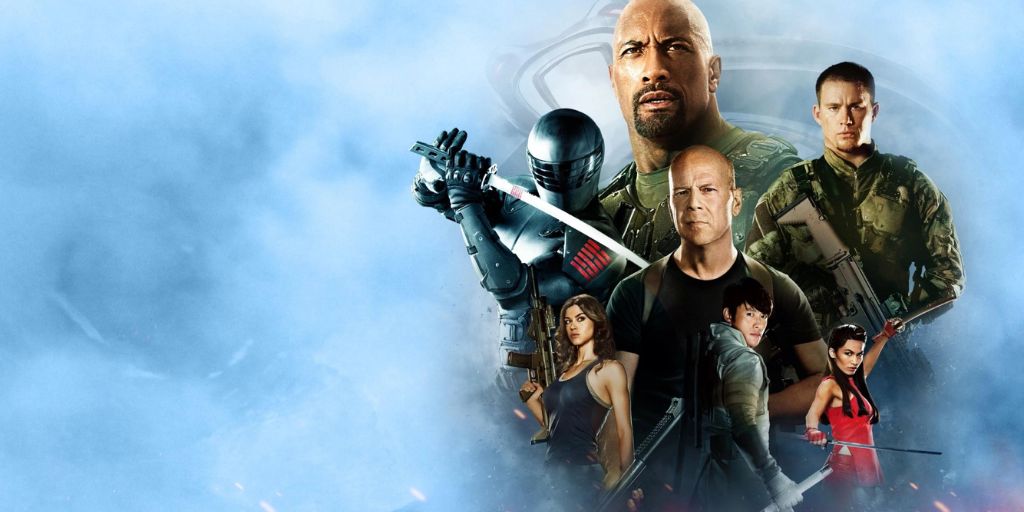
39. The Whole Ten Yards (2004)
As actors are aware that “The Whole Ten Yards” is a dud attempt to win the audience over, a gloomy haze descends over the film. As language mechanically churns through unplayable scenes and the characters show up at moments that the movie believes are humorous but suspect they are not, we detect a certain desperation.
The film is a pointless continuation of “The Whole Nine Yards,” in which many of the same performers delivered very different messages. In my review of the last film, I stated that there was “a slight but distinct atmosphere of jolliness sneaks from the screen.” “We think the actors are hardly able to contain their chuckles.
Although everyone could perform this type of conventional material in lockstep, you can tell the performers are having fun since you can see smiles on their faces. The issue, in my opinion, is that “The Whole Nine Yards” handled the characters perfectly and accomplished everything that needed to be done with them.
The characters have returned, humiliated by their curtain call and blinking under the footlights. The film has the vacant, aimless vibe of a winter beach resort: Though the terrain is the same, the weather has changed for the worse.
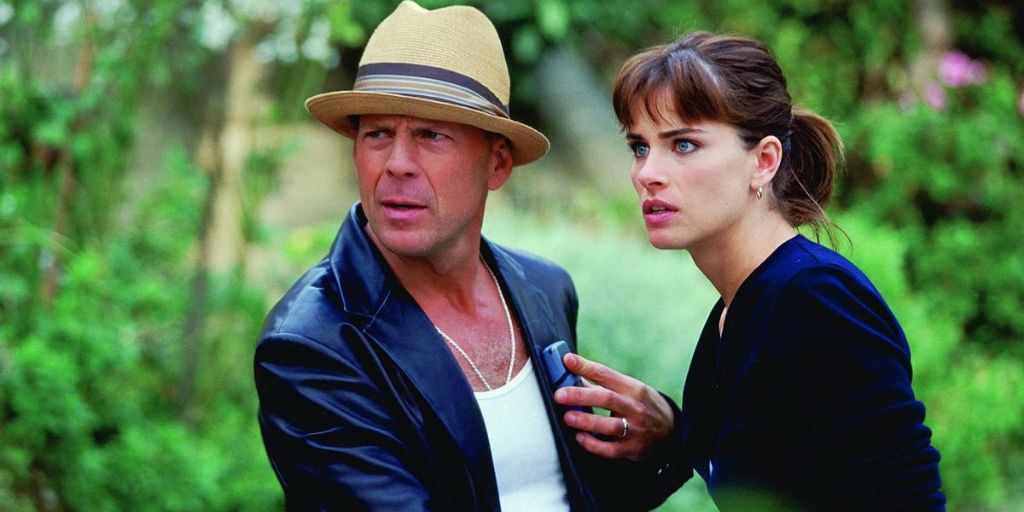
40. A Good Day to Die Hard (2013)
This installment of the tale, in contrast to the others, focuses on the connection between Jack McClane, the father of everyone’s favorite cop John McClane. John was enjoying retirement to the fullest, as you can see. But when Jack, John’s estranged son, needs assistance when stranded in Russia, John has to fly there to assist.
Jack is a CIA spy who is currently imprisoned in Russia after having his cover compromised. As usual, things don’t go as expected, and John McClane finds himself once more entangled in a terrifying terrorist scheme. Even though this film just lasts an hour and 38 minutes, it seems like hours have gone by without it coming to a close.
It’s a bunch of gunfire, punching, and joke lines in this movie, which makes both comedy and action appear dull. In choosing to realize his vision, director John Moore creates a movie that doesn’t truly work as a cinematic experience. To fill theatre seats and generate revenue, the movie is short, action-packed, and devoid of any real drama or emotion.
Only when you care about the characters who are involved in the action is it expected that the action in a movie would be fantastic. You truly don’t care about any of the characters in this movie right away.
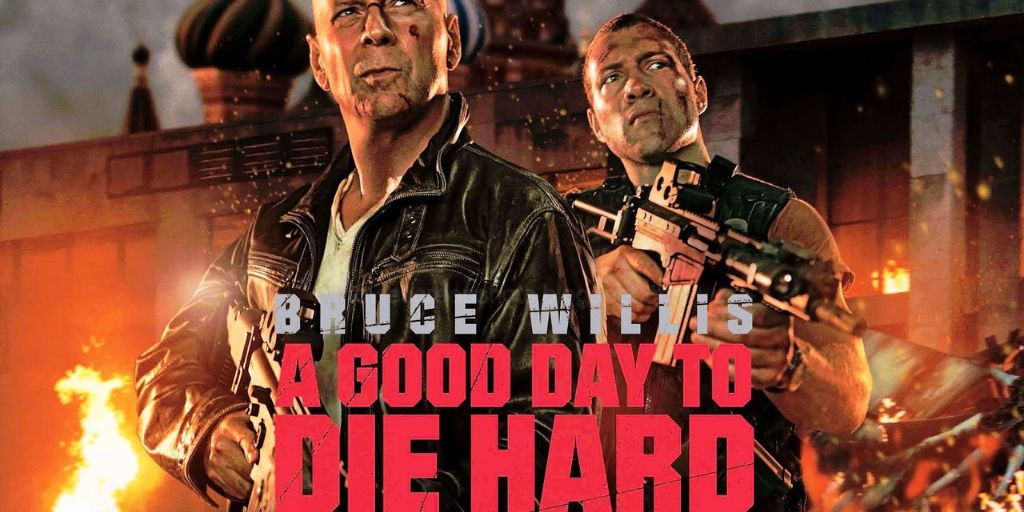
41. Look Who’s Talking Too (1990)
As Mikey is being taught how to use the potty, the movie opens with Mollie and James, who are now married, getting ready for the birth of a new baby girl. James is currently working hard to increase their family’s income. In addition to being a good big brother, Mikey is eager to meet his sibling.
Her umbilical cord becomes tangled around her neck as the baby is ready to be born, distressing her. She is given the name “Julie” and delivered via c-section before being brought to the nursery area for observation. Julie is unimpressed when she first meets Mikey.
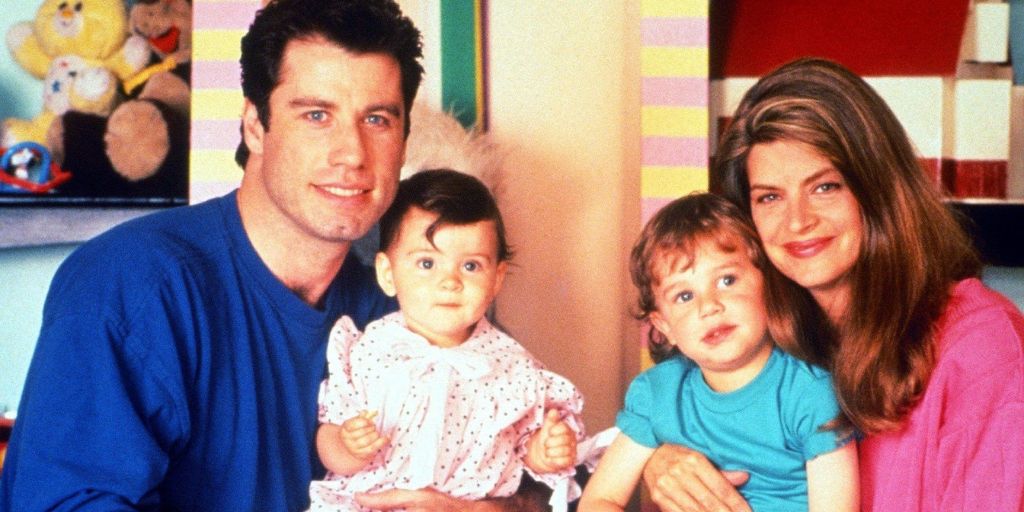
Mikey, on the other hand, swiftly starts to dislike his sister when his idealized vision of a big brother’s responsibility doesn’t match reality. Stuart, Mollie’s lazy right-wing younger brother, arrives at the house in the meantime, and James dislikes him immediately once.
James feels Mollie is overly possessive of Mikey, and this, along with Mollie’s parents pressuring him to accept a demanding piloting job, leads to multiple disputes between the two, which ultimately results in James leaving.
This upsets Mikey, who tears up one of his sister’s plush animals, thinking he has left because of Julie. James enjoys spending time with his kids when he can. Rona, Mollie’s best friend, moves in with her after a break-in, and she soon begins dating Stuart.
Also Read: Bruce Willis To Step Down From Acting After Being Diagnosed With Aphasia

